

CHICAGO’S FREE WEEKLY SINCE 1971 | APRIL 30, 2020 Home & Plants Issue How to make the most of your flora and furnishings
CITY LIFE
03 Transportation Would an East Bay-style Slow Streets program be benefi cial in Chicago during the coronavirus crisis?

08 News Doulas are working double-time to see parents through safe, empowered births in a crisis.

NEWS & POLITICS
05 Joravsky | Politics Mayor Lightfoot channels her inner Mayor Daley.

06 Isaacs | Culture There will be no tiptoeing through the Chicago Botanic Garden’s tulips.
HOME & PLANTS
11 Favorite Things Chicagoans share the objects that make their homes good places to be.
14 Comic In defense of clutter
16 Propagation Money doesn’t grow on trees, but other trees do!
THEATER
18 Improv Chicago improv and comedy classes fill the quarantine void online.

20 Comedy Remembering the early days of the powerhouse Upright Citizens Brigade
FILM
21 Movies of Note The Booksellers takes a deep dive


into the wacky, o en overlooked world of rare and antique books; Porno, despite its racy title, is a lot more Saved meets Demons than it is Deep Throat; and Deerskin is a bizarre horror comedy featuring Adele Haenel.
MUSIC & NIGHTLIFE
22 Feature Chicago indie rockers Ratboys recently released their best album yet, and though they can’t tour, they’re finding ways to stay connected to their fans.
26 In Rotation Current musical obsessions of Huntsmen bassist Marc Stranger-Najjar, musician and producer Sanford Parker, and the Reader’s Jamie Ludwig
27 Records of Note A pandemic can’t stop the fl ow of great music. Our critics review releases that you can enjoy at home.
31 Early Warnings Rescheduled
concerts and other updated
Gossip Wolf Hip-hop activist
“J. Milla” Sevier dies at 47, and Well Yells drops a new darkwave album that traffi cks in the sonics of isolation.
OPINION
Savage Love Dan Savage offers
CONTACT
READER EMPLOYEE, E-MAIL: (FIRST INITIAL)(LAST NAME)
PUBLISHER TRACY BAIM EDITORS IN CHIEF SUJAY KUMAR, KAREN HAWKINS
LEAD RACHEL HAWLEY
EDITOR PHILIP MONTORO
THEATER AND DANCE EDITOR KERRY REID CULTURE EDITOR BRIANNA WELLEN

ASSOCIATE EDITOR JAMIE LUDWIG
SENIOR WRITERS MAYA DUKMASOVA, LEOR GALIL, DEANNA ISAACS, BEN JORAVSKY, MIKE SULA
EDITORIAL ASSOCIATE S. NICOLE LANE GRAPHIC DESIGNER AMBER HUFF
LISTINGS COORDINATOR SALEM COLLO-JULIN CONTRIBUTORS ED BLAIR, NOAH BERLATSKY, LUCA CIMARUSTI, MARISSA DE LA CERDA, MARI COHEN, JOSH FLANDERS, SHERI FLANDERS, JACK HELBIG, IRENE HSAIO, CATALINA MARIA JOHNSON, MONICA KENDRICK, STEVE KRAKOW, NOËLLE D. LILLEY,JAMIE LUDWIG, MAX MALLER, ADAM MULLINS-KHATIB, J.R. NELSON, JEFF NICHOLS, MARISSA OBERLANDER, MATTHEW SIGUR, CATEY SULLIVAN
DIRECTOR OF DIGITAL JOHN DUNLEVY DEVELOPMENT DIRECTOR COLETTE WILLARD SOCIAL MEDIA COORDINATOR JANAYA GREENE MEDIA PARTNERSHIPS COORDINATOR YAZMIN DOMINGUEZ
STAFF AND SPECIAL PROJECTS
ASSISTANT TARYN ALLEN
SPECIAL EVENTS CONSULTANT KRISTEN KAZA
ADVERTISING 312-392-2970, ADS@CHICAGOREADER.COM CLASSIFIEDS: CLASSIFIED-ADS@CHICAGOREADER.COM
SALES DIRECTOR PATTI FLYNN
VICE PRESIDENT OF SALES AMY MATHENY CLIENT RELATIONSHIP MANAGER TED PIEKARZ SENIOR ACCOUNT REPRESENTATIVES LENI MANAA-HOPPENWORTH, LISA SOLOMON ACCOUNT REPRESENTATIVES
GREG MCFALL, NANCY SANCHEZ

CLASSIFIED SALES MANAGER WILL ROGERS
NATIONAL
VMGADVERTISING.COM
JOE
1-888-278-9866
CHICAGO
2 CHICAGO READER - APRIL 30, 2020 ll
listings 31
Jamie
32
advice for a woman drowning in arousal—even in a pandemic! CLASSIFIEDS 34 Jobs 34 Apartments & Spaces 34 Marketplace THIS WEEK CHICAGO READER | APRIL 30, 2020 | VOLUME 49, NUMBER 30 TO
ANY
@CHICAGOREADER.COM IN THIS ISSUE Covert On motherhood, the apocalypse of the interior life, and sheltering on the other side of Lake Michigan. Peruse these virtual bookshelves Ditch Amazon and support local bookstores. The stay-at-home chronicles What we’re reading, watching, listening to, etc., to pass the time. THIS WEEK ON CHICAGOREADER.COM ON THE COVER: PHOTO COURTESY OF THE CHICAGO BOTANIC GARDEN.
CREATIVE
MUSIC
ADVERTISING VOICE MEDIA GROUP
LARKIN AND SUE BELAIR DISTRIBUTION CONCERNS distributionissues@chicagoreader.com 312-392-2970
READER L3C BOARD PRESIDENT DOROTHY R. LEAVELL TREASURER EILEEN RHODES SECRETARY JESSICA STITES AT-LARGE SLADJANA VUCKOVIC CONSULTANT CAROL E. BELL READER (ISSN 1096-6919) IS PUBLISHED WEEKLY BY CHICAGO READER L3C 2930 S. MICHIGAN, SUITE 102 CHICAGO, IL 60616 312-392-2934, CHICAGOREADER.COM COPYRIGHT © 2020 CHICAGO READER PERIODICAL POSTAGE PAID AT CHICAGO, IL ALL RIGHTS RESERVED. CHICAGO READER, READER, AND REVERSED R: REGISTERED TRADEMARKS ®
CITY




Pandemic pedestrian activity and





























cycling
By COURTNEY COBBS AND J OHN G REENFIELD

South Shore senior citizen Josie Conley takes walks regularly to stay healthy during the COVID-19 quarantine. But narrow sidewalks mean that maintaining the recommended six-foot “social distance” from others is kind of like a game of Dodge ’Em. “My mother doesn’t want to take any chances,” explained her son Shawn Conley, who joins her during his lunch break from his job with the Illinois State Board of Education. He also helps lead the Major Taylor Cycling Club of Chicago, a predominantly Black organization with about 120 members.
Josie won’t leave the house unless the sidewalk is clear for half a block in front of her, and once an approaching pedestrian is six or eight houses away, she detours onto the driveway or lawn of an adjacent home to get out of the way. Shawn said other elderly people in the neighborhood use the same approach, steering clear of younger people to avoid respiratory droplets. And since the

track at nearby Eckersall Stadium is closed during the pandemic, joggers and exercise walkers are crowding the sidewalks on the perimeter of the park.
Pedestrians and cyclists jockeying for space in the time of coronavirus present a problem on many sidewalks, trails, and parks across Chicago. That’s been especially true since March 26, when Mayor Lori Lightfoot closed the entire shoreline, including the Lakefront Trail, as well as the Chicago Riverwalk and the 606 elevated greenway, in response to social distancing violations on the fi rst warm day of spring.
Some might respond with the ubiquitous “Stay home!” mantra, arguing people shouldn’t be leaving the house during COVID19 anyway, except for essential jobs and to pick up supplies. But Illinois’s stay-at-home order acknowledges that “walking, hiking, running, or biking” are “essential activities” key for maintaining physical and mental
APRIL 30, 2020 - CHICAGO READER 3
LIFE
TRANSPORTATION
COVID-19
Would an East Bay-style Slow Streets program be beneficial in Chicago during the coronavirus crisis? It depends on whom you ask.
Oakland, California, has banned
through traffi c on 74
miles of side streets to increase access
for
pedestrians.
CITY OF OAKLAND
IMPORTS & DOMESTICS ‘19 Toyota Corolla Hatchback XSE/Navi. Loaded, 11K, Silver, 22343R ..$17,995 ‘16 Toyota Corolla S Prem. ....Automatic, Full Power, 34K, Silver, P6381 ..$13,995 ‘12 Acura TL w/Tech/Navi/ ............Leather, Moonroof, Black, 24284A ..$12,995 ‘14 Nissan Murano LE AWD/Navi. Leather, Moonroof, Silver, 24273A ..$12,995 ‘13 Hyundai Sante Fe 2.0T AWD Automatic, Full Power, Black 23373B ..$11,995 ‘11 Honda CRV EX AWD ....................Automatic, Sunroof, Silver, 24311A ....$9,995 ‘14 Toyota Prius Two ....................Automatic, Full Power, Silver, 23783A ....$8,995 ‘11 Honda Accord LX ........................Automatic, Full Power, 67K, 24134A ....$8,995 ‘09 Mini Cooper S ..........Automatic, Full Power, 58K, Dark Silver, 24393A ....$7,995 ‘11 Hyundai Elantra Ltd. .......... Automatic, Loaded, 51K, Black, 23930B ....$6,995 ‘13 Kia Soul+ ....................................Automatic, Full Power, Moss, 24176A ....$6,995 ‘12 Fiat 500 Pop ..............................Automatic, Full Power, Black, 21534A ....$5,995 SUBARU FORESTERS ‘17 Forester Prem. ....Automatic Sunroof, Heated Seats, Silver, P6521 ..$19,995 ‘16 Forester Touring ........Automatic Sunroof, Leather, Silver, 23651A ..$18,995 ‘14 Forester Prem. Automatic, Sunroof, Heated Seats, White, 24116A ..$14,995 ‘09 Forester XT Ltd ..........Automatic, Sunroof, Leather, Green, 24391A ....$8,995 SUBARU OUTBACKS / CROSSTREK / ASCENT ‘19 Ascent .......................... 8 Passenger, Sunroof, Eyesight, 4K, Grey, P6528 ..$25,995 ‘18 Outback 2.5i Automatic, Full Power, Eyesight, White, P6493 ..$19,995 ‘17 Crosstrek Prem. ........................ Automatic, All-Weather, Black, P6469 ..$19,995 ‘16 Outback Prem. ............Automatic, All Weather, Alloys, Black, 24117A ..$18,995 ‘14 Outback Prem. ........................Auto., Full Power, Alloys, Silver, P4891 ..$13,995 ‘12 Outback 2.5i Automatic, Full Power, Black, 23880A ....$8,995 EvanstonSubaru.com 3340 OAKTON - SKOKIE • 847-869-5700 A+ RATED NO SECURITY DEPOSIT! $2,995 due at signing. LFB-02 #0361 AUTOMATIC, Roof Rails, Alloys EyeSight, All-Wheel-Drive $95 1 0% TOP-QUALITY INSPECTED USED CARS & SUV’ S NO SECURITY DEPOSIT! $2,995 due at signing. LDB-01 #0292 AUTOMATIC, Back-up Camera EyeSight, All-Wheel-Drive *19$8 36 MONTH LEASE * 36 MONTH LEASE * 36 MONTH LEASE 0% NO SECURITY DEPOSIT! $2,995 due at signing. LRA #73012 All-Wheel-Drive, 17’’ Alloy Wheels, Apple Carplay / Android Auto $74 1 0.9% *Add tax, title license and $300 doc fee. 0% financing for 63 months. Monthly payment of $15.87 per $1,000 borrowed. Finance on approved credit score Subject to vehicle insurance and availability. *Lease on approved credit score. Lease, 10k miles per year, 15 cents after. Lessee responsi-ble for excess wear and early termination of lease. End of lease purchase option; Outback $17,806. Crosstrek $13,198, Forster $16,495. Ends 5/04/2020 When A Great Deal Matters, Shop Rob Paddor’s... NEW DESIGN NEW DESIGN Voted “Best Auto DeAlership ” By CHICAGO Voters’ Poll 2019 Evanston Subaru in Skokie NEW 2020 SUBARU FORESTER NEW 2020 SUBARU CROSSTREK NEW 2020 SUBARU OUTBACK 0 0 0 0 FORESTER OUTBACKASCENT IMPREZA 0% FOR 63 MONTHS FOR A LIMITED TIME 9:00AM-6:00PMNEW REDUCED HOURS MONDAY-SATURDAY •SALES •SERVICE •PARTS We are vigilant in upholding the practices as recommended by the CDC SALES BY APPOINTMENT ONLY EMAIL: EPADDOR@EVNSI.COM OR CALL: 847-869-5700
CITY LIFE





wellness during the crisis.









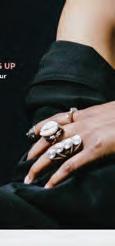


Even if you aren’t convinced that outdoor exercise is important, many people are walking and biking for essential commutes nowadays to avoid risking viral exposure on transit. CTA ridership is currently down about 80 percent, according to the agency.
Cities all over the country are currently seizing this unique moment in which automobile use has plummeted but speeding has increased to give roadway space to pedestrians and bike riders. New York, Philadelphia, Washington, D.C., Boston, Madison, the Twin Cities, Denver, and Portland have all been banning cars on stretches of road during the pandemic to allow people to safely travel and get physical activity.




However, there’s little movement on that front from Chicago o cials. “The Chicago Department of Transportation is paying close attention to what other cities are doing” was about all spokesman Mike Cla ey had to say.















Kyle Lucas is an essential worker with HIV who can’t risk COVID-19 exposure on the CTA. He launched a petition asking the mayor to open streets and/or reopen the Lakefront Trail for biking so essential employees can safely get to work without being struck by speeding drivers. As of last week, more than 1,000 people had signed.
So far Lightfoot has indicated these requests are nonstarters during COVID-19.







“The lakefront’s not reopening anytime soon,” she said at a recent press conference. “There’s lots of bike lanes and bike trails throughout the city.”

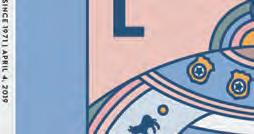


A major reason why an open streets program hasn’t gained traction is that the Active Transportation Alliance isn’t supporting it. “A pandemic does not seem like the most appropriate moment to be pushing forward this vision,” the group stated in an April 7 blog post.









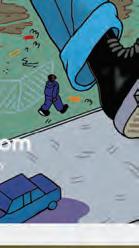
Active Trans argued that doing an open streets program would be resource intensive.




The organization questioned the wisdom of promoting a sustainable transportation program during COVID-19, when health care, employment, and housing are urgent concerns in neighborhoods of color. “In conversations with community partners serving Latinx, Black, and Asian communities, nobody pointed to open streets as an immediate need,” the blog post says. The group also argued that it’s problematic to deploy CPD o cers to enforce street closures in Black and Brown neighborhoods that are already overpoliced.
Active Trans’s opposition to open streets has drawn a backlash from members at a critical time. The group has canceled its main annual fundraiser, Bike the Drive, for safety reasons. Now previous donors say they’re pulling their support. “Having the major transportation advocacy group for our city sit on the sidelines when there is an immediate and clear need and opportunity [for open streets] is unfathomable,” commented software engineer David Altenburg on a Streetsblog Chicago post about Bike the Drive.
Shortly after Active Trans’s post came out, Oakland, California, announced plans for Slow Streets, a clever approach to opening roadways that addresses most of those concerns. It’s creating a 74-mile network of side streets where people can safely walk, run, and bike in the road. Through tra c is banned, but motorists can still access local destinations. It’s quick and cheap, with the only infrastructure cost being for traffic cones and signs. Since it doesn’t involve main streets, no additional policing is needed.






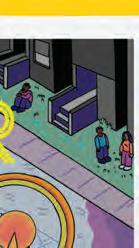


Oakland officials have argued that Slow Streets is equity focused. In an interview last week with Streetsblog USA, Oakland mobility policy director Warren Logan stressed that a major goal was to make it easier for low-income people without cars to do essential trips.
But there’s been pushback to the open streets movement from some mobility justice advocates of color who’ve argued it’s mostly white people who are promoting such programs without enough input from organizations and individuals in Black and Latinx neighborhoods. “I’m feeling pressure from white advocates to advocate for open streets,” wrote a member of The Untokening, a mobility justice collective, in its recommendations for equitably navigating the COVID19 world.



Active Trans declined to tell us which community partners in Latinx, Black, and Asian communities they spoke with. So we asked dozens of community organizations, aldermen, and transportation advocates in neighborhoods of color whether an Oakland-style program might be beneficial during the pandemic. Here’s who responded by press time.


















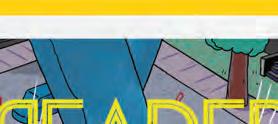






Christian Diaz, lead housing organizer with the Logan Square Neighborhood Association, said he likes the concept in theory, but argued now is not the time. “While [it’s] by no means a terrible idea I don’t have reason to believe this is a priority right now for people who are hungry and at risk of homelessness.”
Derek Lau, program assistant for the Coalition for a Better Chinese American Community, said, “A program that could potentially attract a large crowd of people is dangerous.” After we clarified that Oakland’s Slow Streets model would be spread over dozens of miles, coalition director Grace Chan McKibben said they’d be interested in seeing whether that strategy is successful.
Torrey Barrett, CEO of the Washington Park–based KLEO Community Family Life Center, said Slow Streets is a good idea for areas that lack recreational amenities. But he’d like the program to be combined with additional benefits for low-income residents, such as the city funding bikes for locals and partnering with the Greater Chicago Food Depository to distribute meals on the streets.
Logan Square alderman Carlos Ramirez-Rosa, a Democratic Socialist, is in favor of trying Slow Streets. “The pilot programs being rolled out in other cities should be done here in Chicago to provide opportunities for people to safely walk, run, and bike in the street while practicing social distancing,” his o ce said in a statement.
Jacky Grimshaw, vice president with the Center for Neighborhood Technology, said Slow Streets would work well in dense parts of town with limited access to recreational space. However, she said it would be important to educate residents about the nothrough-tra c rule.
Elihu Blanks, a South Shore resident who regularly attends Chicago’s quarterly Mayor’s Bicycle Advisory Council meetings, said he likes the Slow Streets concept, but doesn’t trust drivers to comply with an unenforced ban on through tra c.
Deloris Lucas, who leads the bike group We Keep You Rollin’ in the far-south Riverdale community area, said she doesn’t think Slow Streets is especially needed in Riverdale, where side streets are fairly quiet, but “I do think it’s a great idea to provide more spaces to ride during the pandemic.”
As for South Shore resident Shawn Conley, he said being able to safely walk in the street would prevent his mother Josie from having to evade other pedestrians. “It would increase her level of comfort,” he said. “I know we’re supposed to be sheltering at home, but as it warms up, people are going to need to get exercise, fresh air, and Vitamin D. So the more I think about Slow Streets, the more I like it.” v
@CourtneyCyclez
4 CHICAGO READER - APRIL 30, 2020 ll
@greenfieldjohn continued from 3 Providing arts coverage in Chicago since 1971. www.chicagoreader.com
Power play
By BEN JORAVSKY
After almost two intense months of sheltering in place, it seems like the country’s slowly getting back to normal—at least when it comes to political power plays.
In Washington, President Trump, Mitch McConnell, and other congressional Republicans inserted language giving massive tax breaks to the fabulously wealthy into the bill intended to help the most vulnerable survive the pandemic.
And on the local front, Mayor Lightfoot used the crisis to strong-arm the City Council into passing an ordinance giving her virtual control over millions of federal and state pandemic relief funds without council approval.
Now I’m not equating Lightfoot with Trump—good lord, even Mayor Rahm wasn’t that bad.
But I would say that both acts come straight from the Book of Rahm—chapter
one, verse one—where our former mayor advises to never allow a good crisis to go to waste.
Though, at the moment, I can’t think of anything even remotely good about this pandemic.
The Trump/McConnell machinations give more money to the 1 percent, while the new Chicago ordinance gives more power to the mayor—something that neither party needs.
Let’s deal with the Chicago ordinance.
It stems from what many people call the Dave Glowacz executive order to give the mayor control over COVID-fighting funds.
Actually, I’m the only person who calls it that—just my way of tipping my hat to Mr. Glowacz, my old podcasting partner, who alerted the city to the mayor’s executive order in an article that recently ran right here in the Reader
In that article, Glowacz quoted several old budget hands who gently suggested—clearly not wanting to infuriate the short-tempered mayor—that it might be more prudent (and legal) if she convinced the council to concede such authority to her. As opposed to, you know, ripping it out of their hands.
So last week Mayor Lightfoot proposed an ordinance to, among other things, give her the authority to enter into contracts of up to $1 million without council approval.
Immediately, her proposal was denounced as a power grab by the unlikely alliance of Aldermen Raymond Lopez and Carlos Ramirez-Rosa—the former being a conservative Democrat from the southwest side and the other a Democratic Socialist from Logan Square.
They used a parliamentary maneuver to prevent the council from voting on the ordinance at last Wednesday’s meeting.
And how did Mayor Lightfoot react? Man, I haven’t seen such a glorious mayoral eruption since Mayor Daley blew his stack at Alderman Robert Fioretti for—you know, I can’t remember why Daley got so angry at Fioretti.
I just know it’s so funny that every now and then I watch it on YouTube just for a good laugh. I know, I need a hobby.
Anyway, after Lopez and Ramirez-Rosa delayed the matter, Lightfoot let ’em have it, calling them “selfish and shameful . . . grandstanders” who, unlike the other, better-behaved aldermen, are putting “their own selfish interests ahead” of “helping our fellow Chicagoans who are literally sick and dying.” And so forth.
As time goes on, Mayor Lightfoot’s short temper is starting to remind me more and more of Mayor Daley’s. Though it’s true, she still has not threatened to stick a rifle up some reporter’s ass—as Daley did to Mick Dumke. Then again, she’s only been in o ce for about a year.
As I can see it, the most compelling argument for giving her the new authority is that in this crisis the city may have to make an emergency purchase upon which lives will hinge, and if she has to wait for the council to give her the go-ahead, people will die.
You hear that Lopez and Ramirez-Rosa? Those deaths will be on your hands!
I had this vision of the mayor on the phone negotiating with a shrewd and evil broker in something like face masks who’s giving her
one hour to put down the cash. Otherwise, he’s selling his masks to Rockford.

In short, the council had to pass this emergency legislation so she has easy access to a stash of cash she can dip into anytime she wants.
And I thought that’s what the TIF program was for.
The other argument is that President Trump, Governor Pritzker, and Cook County president Preckwinkle have emergency powers in the pandemic—so she should get ’em too.
Well, at the risk of getting the mayor really mad at me, I’m not convinced. I mean, of all the problems Chicago faces, I’d say mayoral helplessness in the face of a too-powerful council would not make the top, oh, 10,000. Largely because it’s a problem that does not exist.
The vote went down at a virtual council meeting last Friday, and the mayor prevailed by a margin of 29-21—an astounding display of defiance. Apparently, Lightfoot has managed to rankle Democratic Socialists, progressives, several members of the Black caucus, and even Alderman Ed Burke, who probably will never forgive her for humiliating him after she took o ce.
Arguably, her finest moment as mayor.
I can’t be too outraged because at least she agreed to have her newfound spending authority terminate after June.
Also, it’s going to be a field day for Glowacz, Dumke, and all the other investigative journalists in town who will be filing FOIA requests from here to eternity trying to see which mayoral friend got what contract.
Think of it as Chicago’s very own journalistic payroll protection plan.
Lastly, it’s hard for me to get really worked up over a Daley-like power grab when we have a lunatic in the White House who recently recommended fighting the virus by ingesting disinfectant.
As you can see, we’re still a long way from normal. v
APRIL 30, 2020 - CHICAGO READER 5 NEWS & POLITICS
Mayor Lightfoot’s eruptions are reminiscent of a certain former mayor who liked to blow his top.
DBKING / FLICKR
@bennyjshow POLITICS
Mayor Lightfoot channels her inner Mayor Daley.
pleaserecycle thispaper
miss an issue
CULTURE

No tiptoeing through the tulips
The Chicago Botanic Garden is only open online.

 By DEANNA ISAACS
By DEANNA ISAACS

It’s tulip time. Between now and Mother’s Day, masses of these heralds of spring will burst into bloom at the Chicago Botanic Garden, which counts 750,000 bulbs among the treasures on its Glencoe campus. To see them in fields of dazzling color is to begin to understand the mania that seized Holland in the 17th century, driving the price of a single bulb to many times the annual earnings of ordinary Dutchmen.
We are not seeing them, however. Like most everything else during the pandemic, the Botanic Garden is closed, and has been since March 17. The originally announced closure through April 30 has been extended; the current target for reopening is July 1. A garden spokesperson says they’re following federal, state, and local recommendations and, if they’re able to safely reopen earlier, they will.
I went there anyway last weekend, tulips on the brain. The main entrance (on Lake Cook Road) and both bicycle entrances are blocked, and the entire property is fenced. But there’s a gap under the main gate; it looked like an invitation to slide under and I considered it (Would they spot me, making my way to the
bulb garden?) before giving up and heading to the adjacent Skokie Lagoons, which, so far at least, remain open. On Saturday, Cook County board president Toni Preckwinkle closed parking lots at many of the forest preserves on weekends (including Fridays), but the lagoons aren’t among them. The parking there has always been limited, but it’s still open, as is the bicycle path. You can hike, bike, fish, or launch a kayak or canoe.
The lagoons are all water and woods, more nature than the carefully plotted nurture of the Garden’s display areas, though they’re also man-made, thanks to a massive Civilian Conservation Corps fl ood-control project in the 1930s. There are seven of them, spread over 894 acres of former marshland just east of the Edens Expressway, between Willow and Dundee roads. On Sunday, with the trees still devoid of leaves and many of them felled, the scene was stark and skeletal, like some ghostly gray battleground. Near the shoreline, I stumbled on something startling: parts of a carcass, stripped bare—all empty eye sockets and rib cage. A deer, I’m guessing, and a gruesome reality check. Seeking tulips in a pandemic, I’d found death.
6 CHICAGO READER - APRIL 30, 2020 ll NEWS & POLITICS
The Reader 420 Companion is filled with great recipes, activities and coloring pages Details may be found at chicagoreader.com/420book Don’t
Get the Next 12 Weeks of the Chicago Reader Delivered to Your Home CHICAGO’S FREE WEEKLY SINCE 1971 MARCH 26, 2020 STAY AT HOME chicagoreader.com/support Chicago's Free Weekly Since 1971 We Couldn't Be Free Without You— Support Community Journalism
Like the Chicago Botanic Garden, most of the nation’s famous gardens are closed. But a New York Times editorial last weekend urged that gardens and parks fi nd ways to remain open—the public benefit outweighing the risks. The Botanic Garden was able to limit visitors during its ticketed winter light show; maybe they could use a similar reservation system to allow a manageable number of visitors to return? In the meantime—no public hours and no media visits.
How is the garden faring? Here’s an edited version of responses to questions about that from Executive Vice President Fred Spicer, via e-mail.
What financial e ect is the shutdown having on the garden?
The closure hit us right at the beginning of the Garden’s busy season. Due to not generating planned earned revenue, we have had to reduce operating costs across the board. Reductions in personnel operating costs include wage reductions, reduced hours, and layo s for Garden employees. We were able to keep 86 percent of our sta employed and have implemented a wage reduction for less than half of the Garden’s employees.
You’re also operating without any of your regular force of about 1,400 volunteers; how has the work been a ected?
Many of the Garden’s staff are working remotely and we’re bringing the Garden to the public through our website (chicagobotanic. org) and social media channels. We are continuing to care for our treasured 385-acre living museum, 2.6 million plants in our permanent collection, and production greenhouse operations. Behind the locked gates, a critical operations sta is in place.
What about programming?
We are encouraging people to join us for a #nature moment every Wednesday on Facebook, Twitter, and Instagram to share images of spring blooms. [Also] we are sharing ways one can quiet the mind and connect with nature, such as information on forest bathing. Although all classes scheduled through June 30 have been canceled, we are starting to
make online classes available; [so far] yoga and photography.
How has the shutdown changed what the public will see when the Garden reopens?
Reductions include fully eliminating our spring displays, downsizing our plant orders for summer and fall displays, and cancellation of all travel including our international plant collection expeditions. When the Garden reopens, it will look different, as we have had to prioritize tasks. For example, we have eliminated tasks that require more than one person such as moving large containers. Large planting projects have been postponed.
What’s it like without visitors?
We have moved ahead with planned projects that include construction on the new Shida Evaluation Garden and Shoreline Restoration and converting crushed stone to brick on the path by the English Walled Garden. During the temporary closure we have seen some eciencies in completing projects, as we haven’t had to schedule around our visitors.
What about o -site programs?
The Chicago Botanic Garden manages the Farm on Ogden and 17 Windy City Harvest urban farms, which are also closed to the public. We are still operating and growing produce at those locations. We are currently maintaining the same level of production with aquaponics, harvesting approximately 2,500 heads of lettuce a week, and also other crops. As we retool our distribution model to support emergency food needs for the community, we are adjusting the types of crops we grow [in part for longer storage].

For VeggieRx, which supports patients with diet-related diseases who are also food insecure, we’re creating 100 VeggieRx bags a week [for delivery or pickup]. For Corps, our transitional jobs programming for justice-involved individuals, we are bringing on three small cohorts (3 participants per cohort) who will help with continued produce production.
Are the tulips in bloom?
We are sharing a live feed of the Circle Garden where tulips were planted last fall and their colorful blooms are beginning to pop. v
APRIL 30, 2020 - CHICAGO READER 7
The Lakeside Garden at the Chicago Botanic Garden COURTESY THE CHICAGO BOTANIC GARDEN
@DeannaIsaacs NEWS & POLITICS herreralandscapes.com | (847) 679-5622 Herrera Landscape Lawn maintenance • Landscape design • Plantings Hardscape • Brick paving • Retaining walls and more! Let us create your outdoor oasis! Contact us today! Chicago's Free Weekly Since 1971 We Couldn't Be Free Without You— Support Community Journalism chicagoreader.com/donate
A push for more options
By EMELINE POSNER
Birth and postpartum doula Cassie Calderone returned to work from her own maternity leave in late March, just a week after the city’s shelter-in-place order went into e ect. Her first birth was an induction, scheduled in advance, and the baby was born healthy and to happy parents at West Suburban Medical Center in Oak Park, just outside the city limits, on March 27. But because of precautions due to COVID-19, this birth looked di erent than any other in Calderone’s four years of practice. Calderone, who has a preschooler with asthma and a three-month-
old, self-quarantined for two weeks before and after the birth for her clients’ and her family’s safety. And, she said, after her client’s 24-hour labor, she learned that the hospital had just implemented a new policy preventing visitors who left the labor and delivery unit from returning.
Fortunately for the couple, Calderone didn’t need to return, and neither parent had a reason to leave the unit before they were discharged: this was their first child, so they had no older kids to pick up from the neighbors or the grandparents. But in other instances in birthing hospitals across the city, recently instituted and
sometimes irregularly enforced visitor policies—introduced in an e ort to slow the spread of the novel coronavirus—have kept doulas out of the delivery room, or even removed them in the middle of a labor, making the process of bringing life into the world a little more fraught.
“[Other birth workers] were saying, ‘I went to Prentice [Northwestern Medicine’s Women’s Hospital] and I was allowed in, but while I was there, I was asked to leave,’” said Calderone, who works privately as well as through a community doula program at Advocate Illinois Masonic Medical Center. “Information was changing by the minute.”
In response to the COVID-19 outbreak, hospitals have adopted temporary no-visitor policies in accordance with CDC and Illinois Department of Public Health guidelines, granting exceptions for patients in their labor and delivery units, among others. But not all hospitals are in agreement on the question of how many visitors to allow birthing parents.

West Suburban, a popular birthing hospital,
is just one of a handful of area hospitals that continue to allow parents to labor with a partner and a doula after both have been screened for exposure to COVID-19 (at West Suburban, this means ensuring visitors don’t have a cough, fever, or shortness of breath, though other hospitals may also ask about recent travel and contact with people who have tested positive for COVID-19); others include the Advocate system hospitals and Rush. In nearby Berwyn, the PCC Family Birth Center allows each birthing parent three visitors: a partner, another family member, and a doula. AMITA Health Saint Joseph does allow a doula in addition to a visitor, unlike other AMITA city hospitals. (The hospital confirmed this to Birthguide Chicago, which maintains a daily updated list of birthing hospital visitor policies.) But the lion’s share of hospitals, including UChicago, Prentice, and Mount Sinai, have adopted a strict one-visitor policy for labor and delivery units, counting doulas as “visitors” rather than an essential part of the birthing team. However, there’s still some inconsistency in how hospitals interpret their interim policies.
“The chain of communication in a pandemic is not great,” said Qiddist Ashé, a birth and postpartum doula. On March 27, Ashé accompanied a client in labor to the University of Chicago Family Birth Center, where, she said, she had been assured by a sta member that she could enter in addition to her client’s partner. But when she arrived, the person she had spoken to was not on call, and she wasn’t allowed in. For the first time in her several years as a doula, she aided her client through labor virtually. A spokesperson for UChicago Medicine said in an e-mail statement that the birth center currently does not allow doulas to enter the hospital, but is working to facilitate virtual doula support.
“As doulas we prepare for the unknown, and help other people prepare for the unknown,” Calderone said. “[During] a pandemic, how are we going to know? How is anybody going to know?”
Birth justice advocates worry that the one-visitor policies adopted by most hospitals will make it harder for them to fight against existing racial disparities in maternal health care. Having to choose between a partner and a member of your birth support team can cause “emotional stress and, probably, lessened physical comfort and all the consequences
8 CHICAGO READER - APRIL 30, 2020 ll
NEWS & POLITICS
Birth and postpartum doula Cassie Calderone helps a private client through labor at West Suburban Medical Center on March 27.
MALINDA NICHOLSON
NEWS
Doulas work double-time to see parents through safe, empowered births.
of not having a doula,” said Anya Tanyavutti, executive director of Chicago Volunteer Doulas (CVD), a nonprofit birth justice organization that provides free doula care for its clients, the majority of whom are people of color.
Doulas, studies show, help improve health outcomes for parents and babies. Doulaattended labors are shorter and less likely to leave the mother with “negative feelings,” as well as 39 percent less likely to result in a C-section. Regular prenatal doula meetings made atrisk parents four times less likely to give birth preterm. In a hospital setting, doulas can serve as advocates, making sure that all birthing people—but especially clients of color and Medicaid patients, who research shows are at greater risk for complications—have their voices heard and birth plan respected.
While the American College of Obstetricians and Gynecologists recognizes the significant benefits of doula-assisted births, it has not issued a statement on the topic of restrictive visitor policies during COVID-19: it recommended that patients ask their providers about specific policies for doulas. The Association of Women’s Health, Obstetric and Neonatal Nurses, on the other hand, came out with a strong statement of opposition: “AWHONN opposes hospital policies that restrict the presence of a doula in the inpatient setting during an infectious disease break.”
For parents of color, and especially Black parents, in Chicago—who due to decades of racist policies and health-care inequities face much higher risks than white parents of developing conditions or dying during pregnancy, birth, or the postpartum period—the prospect of giving birth in a hospital has become even more fraught as the peak of COVID-19 cases approaches and hospital beds fill up with people who are struggling to weather the respiratory infection on their own.
“What we see are some really tragic and unfortunate parallels that really demonstrate the levels of racism embedded in our medical institutions, our housing institutions, our economic institutions,” said Tanyavutti.
In Illinois, Black women are six times more likely to die of a pregnancy-related condition than white women—almost twice the nationwide rate. A 2018 report by the Illinois Department of Public Health found that 72 percent of all pregnancy-related deaths were preventable. Last year, Illinois representative Mary Flowers pushed new legislation through to establish more legal rights for birthing parents as well as a task force to better understand the high death rate for Black mothers and babies.
The maternal health crisis for Black parents is compounded by the pandemic, which is also disproportionately affecting Black people in Chicago, who represent only 29 percent of the city’s population but 70 percent of COVID-19 deaths as of April 5, according to WBEZ.
Ashé, who works predominantly with Black pregnant people and their families, said that these converging crises have raised the stress level for parents of color who are preparing to give birth during the pandemic. “A lot of [my clients] are feeling a greater sense of anxiety about the safety of them and their babies,” Ashé said. “That anxiety is compounded on top of the concerns and valid fears around racism . . . within the medical system.”
The desire to have a safer, more empowered birth experience in a hospital setting is what leads many of her clients to seek out her doula care in the first place, she said. Along with providing other labor support, Ashé helps to “protect the space” for clients, and make sure that their needs are heard and met.
Some of Ashé’s clients have expressed interest in home births as COVID-19 cases continue to climb. But unlike Wisconsin, Illinois does not recognize or insure home births, and so there are few certified midwives who are willing to attend home births. Most of these midwives who do attend home births are now nearly at capacity. And since insurers in Illinois won’t cover home births, it can be prohibitively expensive—anywhere from $1,500 to $5,000. Others are opting for free births, or family births, which is a birth in the home, supported entirely by family members and birth workers.
Ashé honors her clients’ preferences, and will continue to support them if they choose to do a home birth or even a free birth. (Some doulas won’t attend free births.) But most major health organizations, including the American College for Obstetricians and Gynecologists, recommend that pregnant people continue to give birth in hospitals. And for the vast majority of people, a hospital birth is the only choice.
Tanyavutti and Ashé (who is a Chicago Volunteer Doulas board member) are joining other birth workers across the city in lobbying Governor J.B. Pritzker to release a statement explicitly a rming doulas as essential workers, in the hopes that hospitals will consider doulas as integral members of the birth team rather than as visitors. They cite CDC-issued hospital visitor guidelines, which say “facilities can consider exceptions . . . when a visitor is essential for the patient’s emotional well-being and care.” CVD is also helping circulate resources and talking points for calling the governor and a
Change.org petition started by Chicago Family Doulas to the same end.
Last month, in response to Michigan birth workers lobbying for their work to be recognized as “essential,” Michigan governor Gretchen Whitmer released a statement saying that all birthing people should be able to be accompanied by a doula and a partner. In addition to helping support parents of color through an increasingly stressful hospital experience, Tanyavutti said the support of doulas can help free up already stressed hospital resources. “Our doulas help mitigate medical intervention,” she said. “You’d think they’d want to lessen the need for medical intervention.”
Even if lobbying does eventually allow doulas to be present for all births, doulas and organizations like CVD are coming to terms with the fact that COVID-19, and social distancing, may have a longer-term impact on birth work.
The doulas I spoke to are following the CDC recommendations, and in some cases taking additional precautions, to keep themselves and their clients safe. Calderone plans to self-quarantine before and after all upcoming births for the foreseeable future, though it won’t always be so easy to do. The March birth was a scheduled induction, but babies don’t always arrive in the time frame they’re expected.
For the births she cannot attend in person, and for prenatal visits, she’s switching to virtual care—both in her capacity as a private doula and as a community doula with the Healthy Families program at Illinois Masonic, where she sees mostly low-income, pregnant teens. It hasn’t been easy. “I’ve been working incredibly hard to help everybody adjust,” she said. “I was personally like, ‘Am I doing enough?’”
The Ounce of Prevention Fund, an Illinois nonprofit that promotes early childhood development in low-income communities, is advising the ten community doula programs it funds in Chicago—including the Healthy Families program—only to meet with patients virtually or over the phone, including for birth. While virtual care is “suboptimal,” especially because some families may lack the technology, spokesperson Corrie Leech said, it’s in accordance with advice from public health o cials to limit the spread of the virus.
While CVD is also providing prenatal care virtually, the organization is working on a caseby-case basis with its doulas and clients to help them make an informed decision about whether in-person birth support and postpartum care is safe. In-person postpartum care is especially
APRIL 30, 2020 - CHICAGO READER 9 NEWS & POLITICS
“Humans have been birthing for a very long time, and have gone through a lot of apocalypses.” —Qiddist Ashé
important for some families, Tanyavutti said. It can be extremely difficult to make breastfeeding work, especially if it’s not something that’s “normal” to a parent’s community or family, without early lactation support. “What we want to try to prevent is a generation of vulnerable birthing people and infants having less access to breastmilk and chestfeeding.”
At a time when low-income families are experiencing severe income instability because of workplace shutdowns, providing safe, in-person lactation support is particularly important, Tanyavutti added. Formula is a major expense, costing parents on average between $1,200 and $1,500 in the first year of a baby’s life. And there are long-lasting benefits of breastfeeding that can help reduce disparities in child health and development.
For others, virtual postpartum support may be enough. The couple whose birth Calderone attended in March needed her to be there and present for labor, but then were OK with receiving virtual support from her postpartum as they quarantined at home with their newborn. And after the shelter-in-place order



was announced, Calderone made the choice to start seeing her own postpartum doula virtually, too. Even through FaceTime, being able to talk to her doula and having her doula talk to her preschooler so that she can focus on taking care of her newborn has been helpful.
While Ashé and Calderone still have clients—and therefore income—for the foreseeable future, CVD has had to adjust their fund-raising strategies since postponing its annual summer soirée, funds from which cover most overhead costs. Now, it’s launched a spring donation drive and is planning to apply for payroll protection funding to make up for the lost funds. But Tanyavutti sounded optimistic, saying they’ve been “humbled and touched” by the support they’ve received already.
In a line of work that’s traditionally handson, switching to virtual isn’t always logistically easy. While the transition to FaceTime and Zoom has gone mostly smoothly for Ashé, she said it’s not always easy to showcase the more physical aspects of birth preparation. “Just the other day I was trying to demonstrate birthing positions through FaceTime,” she said, laugh-



ing. “So I get on the floor, I’m tilting the camera down, pretending to be a pregnant person and support person at the same time.” At the births she has assisted virtually, though, she says nurses have stepped up, o ering to help coordinate or carry out her instructions. She continued. “My hope is that in the move toward digital services, we don’t lose our traditional and ancestral forms of working person to person. So much of the care that I o er, and that many people don’t get in the medical model, involves physical touch.”
As she looks toward the future, she says she’s thinking of pregnant people who are incarcerated in the middle of a public health crisis that has turned prisons and jails into the biggest COVID-19 hotspots city- and nationwide. CVD continues to provide support to incarcerated people at Logan Correctional Center, a prison 30 miles north of Springfield, where they run a peer doula training program. While two pregnant people, one of whom is due in May, have been released and are receiving virtual support from CVD doulas, the incarcerated doulas in training are in lockdown; CVD is giving them extra communication credits so that
they can stay in touch with their mentors and their loved ones.

“It’s a frightening and frustrating time to see how vulnerable people are being treated in these moments,” Tanyavutti said. “The reason why our work is so critical is not because of a problem we’ve created. We are mitigating a problem that the system has.”
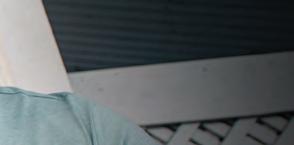
Ashé says she hopes that Chicagoans will be inspired to advocate and call for the release of all incarcerated people, but especially those who are pregnant or parenting while incarcerated. In the meantime, she continues to advocate for doulas to be considered indispensable parts of parents’ birth team. And in the midst of the pandemic she’s finding grounding in the depth and dedication of the birth worker community, in ritual, and in the resilience of the birthing body.


“Humans have been birthing for a very long time, and have gone through a lot of apocalypses,” Ashé said. “The babies coming into the world right now are coming into the world for a particular purpose.” v




SCRATCH FOR STACKS




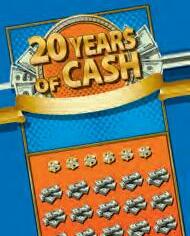





10 CHICAGO READER - APRIL 30, 2020 ll
NEWS & POLITICS
@emelpos continued from 9
By SALEM COLLO-JULIN
Stay-home edicts and orders preventing Illinois residents from public congregation have only been in place for about a month as I write this, but people are already feeling the e ects of living like Emily Dickinson (albeit with access to a 24/7 news cycle
and grocery delivery). Dickinson is perhaps one of our most famous American homebodies, but even the confi nes of her father’s house in late-19th-century Massachusetts was inspiration enough for her to come up with worldly and lascivious lines like “Row-
ARTS & CULTURE
mental protest last year. I’m so proud of her. I love her to death, and seeing her painting every morning when I get out of the shower reminds me of her and her two sisters (who also have names beginning with Z—we call them the three Zs), and reminds me that children are our greatest blessing. And they are Gen Z, and awesome, and our future, and we owe it to them to leave them a world that is as much a blessing to them as they have been to us. It’s a good way to start the day, at least for a guy who grew up in a big Irish family, in neighborhoods full of big Irish families, and especially when I’m quarantined at home alone. Children are a precious gift, even if they aren’t ours, and even if we can’t see them in person.”
DWAYNE KENNEDY
ing in Eden — / Ah, the sea / Might I moor — Tonight — / In thee!” (from her poem number 249, aka “Wild Nights — Wild Nights!”).
While most of us are, rightfully, just dealing with the juggle of the new, some can see our stay-home e orts as an opportunity for taking stock. Some of us are fortunate to have people and pets living with us with whom we’re excited to spend more time, but most of us privileged enough to have shelter can point to at least one thing that makes our home a good place to be.
I asked a group of notable Chicagoans to share some of their favorite items in their house and tell us about the things that have made this time a little easier. They all provided their own photos, and some had reflections about the experience of being in the world during this troubling time.
 JERRY BOYLE
JERRY BOYLE
Attorney and National Lawyers Guild Chicago legal observer Object: a painting by Jerry’s goddaughter, Zoharia Lev Drizin
Jerry shared a painting that his goddaughter Zoharia (now in college) gave him when she was in second grade. “Zoharia is the first daughter of my former roommates, and I was her Ba’al HaBeracha—I gave the blessing at her naming ceremony. Christians know these traditions as godfather and baptism, and we often use godfather/daughter so other people get the relationship. She’s a freshman . . . majoring in environmental studies, and I got to cover her as a legal observer at an environ-
Emmy-winning producer, comedian, and south side native Objects: remote control, television
Dwayne sent us a photo of his remote control and television, familiar items for most of us these days. “Let’s just go with the picture of the TV. It’s the closest I ever want to be to visiting anybody or anybody visiting me . . . and that was even before the pandemic!”

SALOME CHASNOFF
Filmmaker and arts educator, founder of Beyondmedia and member of the PO Box Collective Objects: Salome’s bed, a mannequin in Salome’s house
“Instead of jumping out of bed every morning to get to work as I’ve done most of my life, I’ve been hanging in bed for hours, reading, like I have all the time in the world. My memory foam pillow has made this delicious behavior extra special. I just fi nished On Earth We’re Briefly Gorgeous [a novel by Ocean Vuong] and I’m starting The Shape of the Ruins [by Juan Gabriel Vasquez]. We’ve had the mannequin around forever. Our daughter used her in photo shoots in high school. I put her in the window to help me participate in a local quarantine project, #neighbors4abolition—a way to vocalize our protest against people being held in prisons and jails that are quickly turning into death camps. I change her outfit when the spirit moves me.”
SHARLENE KING
User-experience designer and information architect
APRIL 30, 2020 - CHICAGO READER 11
STAY
HOME Chicagoans share the objects that make their homes good places to be.
Objects: dinosaur costume, cat castle, resistance band platform
Sharlene shared a few items built around the inspirational theme of making this time work for you: “I’m really digging the cat castle I built out of old cardboard boxes. All I used to build it was wood glue. I used a large bowl and some pots to cut the di erent holes out. All the wood I’ve scrounged and the tools I’ve accumulated over time since I was a student at SAIC 20 years ago means I’ve been building wood things during this time. One of my favorite projects is this resistance band platform that lets me do squats, deadlifts,
and shoulder presses again. I’m doing a lot of Zoom calls these days and the costume is sure to bring a smile to someone’s face. I’ve also been able to help out friends with kids by reading them books or talking about dinosaurs. It is impossible not to be adorable if you dance in the costume.”
RICH KOZ (aka SVENGOOLIE)
Television host and creature of the night Object: art by Tom Richmond for Mad Magazine (published in 2018)
“This is the original Tom Richmond art for the Svengoolie Mad Magazine satire that was

presented to me as a birthday gift by the guys of my TV crew. It makes me feel happy. It was an honor to be spoofed in Mad, and it reminds me of the great people I work with that I look forward to being back with again—hopefully soon!”
DAN SINKER
Author, publisher, founder of Punk Planet , and cohost of the Says Who podcast Object: Dan’s Singer Heavy Duty sewing machine
Dan has been making masks with his Singer. “It started with just making masks for my family using scrap fabric around our house and then I kept unearthing boxes of fabric that my wife Janice and I had collected over the years. We’ve sent over 150 masks out now to people we know, people we don’t, frontline nurses, an entire preschool class. It’s become my morning ritual now to get up and cut and sew masks before school and work starts. I’m always making things—though mostly online—so this is the perfect mindless busy work for me right now. And, it helps people. I know how to sew (thanks 1980s public school home economics) and usually make the kids’ halloween costumes—bought this machine a few years ago after the ancient one we had finally broke—but that’s the totality of it. When I just wanted to make masks for us, I had to look up the sewing machine manual
online to remember how to thread the bobbin once the one that was in there ran out. But now this machine sits on our dining room table, moved to the floor for meals, and then back up for another round of stitching.”
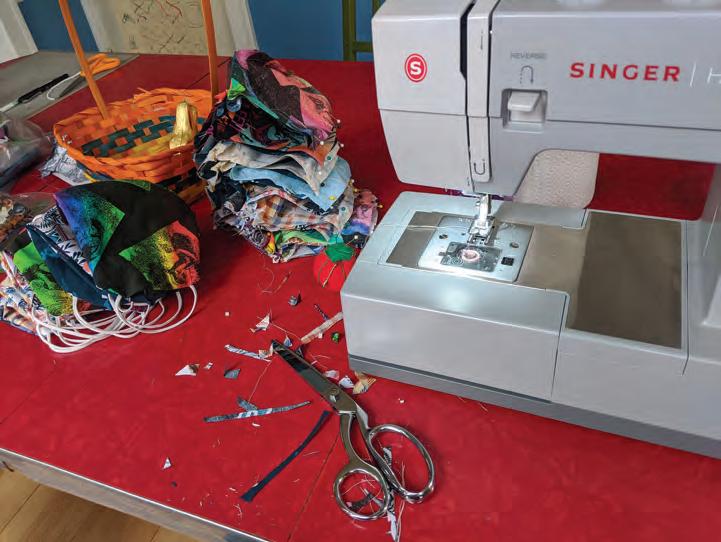
KAINA
Musician, whose 2019 album Next to the Sun made the Reader ’s Best Chicago Albums of the 2010s list
Objects: plants, a Nintendo Switch
“It’s been really nice waking up to a whole bunch of plants in my room. They’re still living, and tending to them and paying attention to their habits has been a nice way of staying in touch with life as it moves. I got a lot of these from the local store Plant Shop Chicago, which is one of my favorite businesses to support—I picked up a few during quarantine since they’re offering pickup and drop-off. Some of these are cuttings from friends so it’s nice to have that reminder of socialization too!”
Kaina also sent a photo of the Nintendo Switch, a gadget that a lot of people have discovered as a great distraction. “My best friends Paige and Sen gifted this console to me for my birthday two years ago and it’s really felt like a blessing. Animal Crossing recently came out and it’s such a peaceful and cute game so it’s allowed me to calm down my everything-is-burning feelings. I use it a
12 CHICAGO READER - APRIL 30, 2020 ll ARTS & CULTURE
lot to pass time during drives on tour so it’s nice to tap into that zoning-out feeling while things are bad.”

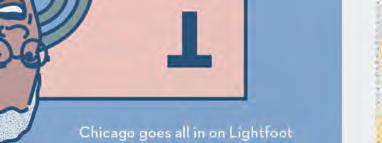

JOHN CUSACK



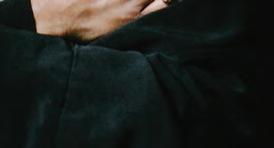
Former Evanstonian, actor, activist







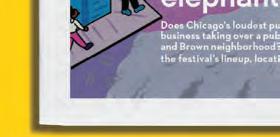

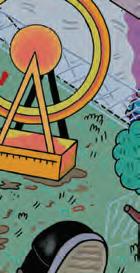
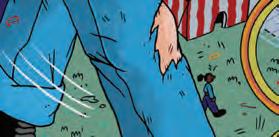

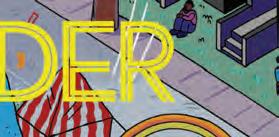

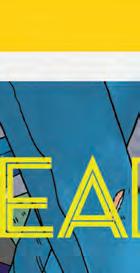








white




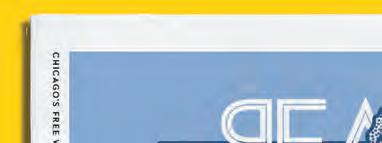







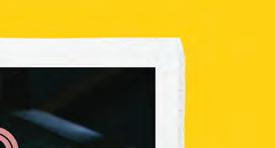

Mr. Cusack graciously sent me this image, which includes a white crystal that seems to have a prominent place in his home. While he wasn’t available to chat about his object, white crystals are well known in the spiritual community as a clearing stone that attracts good light and energy and invites peace into



a home. Even Emily Dickinson could get into this: as she wrote in poem number 1510, “How happy is the little Stone / That rambles in the Road alone, / And doesn’t care about Careers / And Exigencies never fears.”













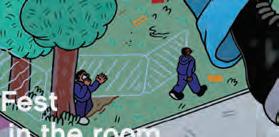
















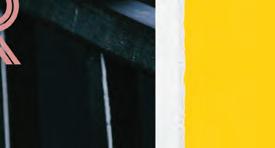
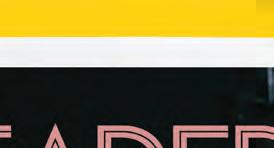


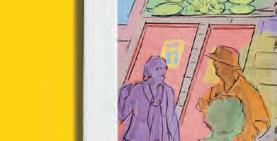







APRIL 30, 2020 - CHICAGO READER 13 ARTS & CULTURE
Object:
crystal
v @hollo pleaserecycle thispaper Providing arts coverage in Chicago since 1971. www.chicagoreader.com

14 CHICAGO READER - APRIL 30, 2020

APRIL 30, 2020 - CHICAGO READER 15
CULTURE




PLANTS



Propagation in isolation




 By MAYA DUKMASOVA
By MAYA DUKMASOVA
In this time of isolation and general slowdown, many of us are spending an unprecedented amount of time at home, among the inanimate objects and living beings that add texture, sound, and color to our daily existence. Perhaps we’ve started cleaning more out of boredom, or rearranging our books, or trying new recipes. We may be cuddling with pets or kids like never before. And we may be looking at our houseplants and feeling the urge for more. Luckily, you can materialize and multiply plants like Jesus with his loaves and fishes. An avocado plant will grow out of a pit, an onion can easily become a source of green shoots, and scallion root tips can yield a new bulb garden. Every plant can become more plants, often from nothing more than one of its leaves or tendrils. And luckily, it’s spring, the optimal time for propagation, as the temperature warms and daylight grows longer.
There are three basic ways of propagating most houseplants: stem-and-leaf cuttings, pup cuttings, and root division. Pup cuttings (like from monstera or aloe) can be placed in water or soil to develop their own roots. Plants that can be propagated by dividing root clusters (like ferns or snake plants) can go directly into

soil, too. Stem-and-leaf cuttings (think pothos and philodendron tendrils) can be placed in any receptacle of water and multiply quickly. Plus they look cute in glasses, bottles, or vases around your home.

There are a million guides to propagation online, and tons of inspiration for propagation aesthetics on Instagram, but sometimes it’s good to just follow your gut, particularly with succulents. Pluck off a juicy leaf, let it rest away from a playful cat’s paw or curious toddler’s mouth for a couple of days until the broken part scabs over, then place on top of some soil in a pot, spritz or soak every so often, and watch its new roots appear. Soon enough there’ll be more succulents for sunny windowsills.
“In propagation the name of the game is increasing humidity so that the nodes can generate new sets of roots,” says Damiane Nickles, who runs the @notaplantshop Instagram plant shop. Though his business is temporarily on hold due to the coronavirus lockdown he’s propagating as actively as ever, starting with his favorite Sansevieria snake plants. “They’re so fucking tough,” he says, launching into a story about how he’d repotted one a
16 CHICAGO READER - APRIL 30, 2020 ll
Money doesn’t grow on trees, but other trees do!
ARTS &
COmedy from Your cOUCh Connect, Laugh, Create with People Around the World Through Virtual Classes! IMPROV • STAND-UP • WRITING • & MORE! SECONDCITYONLINE.COM • 312-337-3992
while back and found a new baby in the root cluster. He stuck it in his pocket to plant later and forgot all about it. “I gave the jeans a wash and the next day found the cutting and it still took after the wash,” he says. “I also really like the fact that you can cut one leaf into several different pieces. That way you can get many many more plants out of one leaf. They’re very economical and pragmatic plants.”
Though Nickles sometimes propagates in water, his preferred method is to plant cuttings in a pot of soil and seal them in a gallon-sized ziplock bag. The bag functions like a greenhouse. “You don’t even need to water it that much,” he says. “Similar to a sourdough starter, I do like to burp the bag. I open it up and get some fresh air in there every three or four days.” Once the roots have developed and the plant has grown somewhat, the plant is ready to molt out of its plastic cocoon.
ARTS & CULTURE


Whatever the growing medium, Nickles recommends keeping propagating cuttings out of direct sunlight.

Pothos are particularly easy for novice propagators. “They will propagate even if you don’t have the best indirect light in your house,” Nickles says. “I usually like to take a big long strip, a nice piece with maybe six leaves, cut the bottom leaf, and I’ll stick that in soil and into a plastic bag or just straight into water. Pothos are great because once the growing season begins they start growing so quickly.”
For people who think they don’t have a green thumb, propagation can be a great way to grow more comfortable with plant care. You can propagate a bunch of cuttings at once in di erent spots around your home to see what sticks. “For the virgin propagator I’d say don’t freak out if the first one doesn’t work,” Nickles says. “Sometimes it doesn’t work and you have to try again. It’s more rewarding the next time. Don’t be afraid of failure.” v
@mdoukmas

APRIL 30, 2020 - CHICAGO READER 17
Grow your garden using stem-and-leaf cuttings, pup cuttings, or root division MAYA DUKMASOVA FOR CHICAGO READER
Making it up as they go
By KERRY REID
When the Upright Citizens Brigade announced that it was closing its training center and theater in Manhattan last week, it illustrated the challenges of keeping improv and sketch alive during a pandemic shutdown. But for several institutions and individual instructors, Zooming over to the online world has opened up some new possibilities and also allowed them to keep an income stream coming in as their stages remain dark.
It seems counterintuitive, for sure. As Jack Helbig notes in his Reader article this week on UCB’s closing, “most of the games created by Viola Spolin that birthed modern improvisational theater are intended for intensely social
situations where people are on stage, together, interacting at much closer range than six feet.”
But after speaking to a few improv and storytelling instructors and sitting in on a dropin improv class o ered through Second City, I can see that there are some advantages—or at least not completely insurmountable disadvantages—to the online forum.
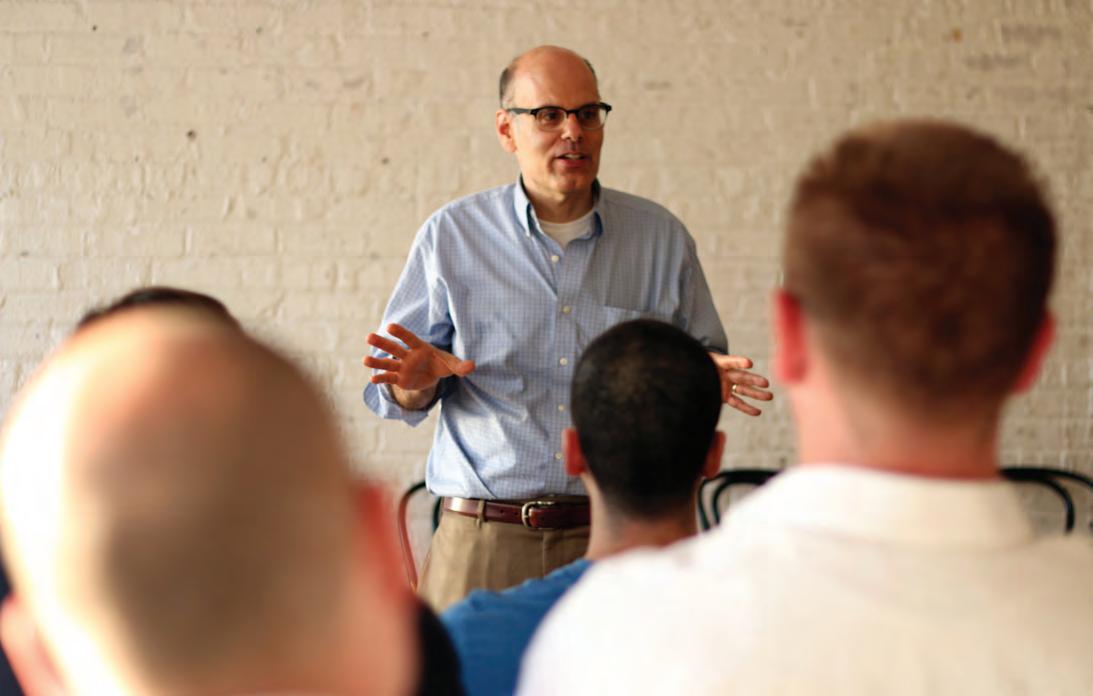
Jimmy Carrane, who has been teaching improv and performing solo shows in Chicago for decades, made the leap online initially with great reluctance. “I am a very resistant person and very kind of old school,” he says. Or, as he wrote on his blog, “I would rather walk around filled with gloom and doom than take action.
(Side note: I don’t like change. And there’s
enough change going on in the world that I could not accept another one).”
Yet only a couple weeks into the process of teaching online, Carrane says he can already see the benefits. “My method of improv is the art of slow comedy,” he says. “So it’s really about slowing down. You don’t have to do crazy scenes. It’s more relationship based.”
One of the games that Carrane has been teaching for years, which he calls “Documentary,” even starts out with two people addressing an invisible camera and introducing themselves and then improvising a story about how they met. “When you use stuff like that online, it really works because—well, it’s improv, right? You use what you’ve got, so you’re embracing
what is already there.”
Abby Wagner, vice president of the Second City Training Center, notes that they had been o ering online classes for nearly a decade, but they had primarily focused on writing. “A lot of sketch writing, writing screenplays, writing satire.” But the company shifted to offering nearly all of their live in-person classes, including improv and musical improvisation, in the online realm.
One thing that has changed is the running time for several of the courses. “Usually our classes last for eight weeks and go on for three hours,” notes Wagner. “To be more accessible to people who are maybe uncertain about when they’re going back to work or who don’t live here, we’ve added a ton of 90-minute drop-in classes, or four-week classes.”
I was a fly on the wall for the Second City drop-in class I attended. (The dozen students and the instructor, Jonny Nelson, knew I was listening in, but I was on mute and o camera the entire time.) The classes use Google Meet, which provides live captioning, thus making it easier to follow along.
Most of the students were from out of state, including participants from Hawaii, California, New York, Florida, Ohio, and Pennsylvania, as well as a few from the Chicago suburbs. After a quick tutorial on the functions of Google Meet and explaining that the chat bar would be used for providing improv suggestions, Nelson told his students “If anything feels silly or awkward or weird, you’re doing it right. This work is entirely about ensemble.” He also cautioned them about avoiding “mean-spirited” choices in character.
Over 90 minutes, the students played three di erent improv games that focused on listening skills and the basic building blocks of “yes, and”—whispering back a line that the person before them had said and figuring out how to be specific with details of where they were in their online improvised world. “Specificity is your friend,” Nelson reminded them. “Once you’ve narrowed down where you are, it actually gives you a lot more room to play.”
Given that few of them had any training in improv at the start, it went surprisingly well, and I found myself wondering how much of that was enhanced by the fact that the technology required them to focus closely on each other onscreen to keep the thread going.
“Don’t plan on what you’re saying next,” cautioned Nelson. “As humans, our brains want to plan and plan. Slow it down, listen,
18 CHICAGO READER - APRIL 30, 2020 ll
ONLINE THEATER TRAINING
Improv and comedy classes move online.
Jimmy Carrane
BLAKE MIKOL THEATER
and absorb.” In a time of uncertainty and social distancing, learning to be here now and just stay in the moment seems especially useful.
Wagner notes that Second City is now reaching students who not only are geographically removed from a Second City training outpost, but may have other barriers. “We just sent out student surveys and I was reading some that said ‘Oh, I never would have had the guts to go to a stand-up class, but I loved trying this online. It felt safe.’”
Dave Maher has been through some stuff, including a weeks-long diabetic coma nearly six years ago that formed the basis for his solo, Dave Maher Coma Show. So surviving a quarantine maybe doesn’t seem that bad by comparison, though he notes with a laugh, “I was unconscious for the coma.” Now he’s o ering online versions of classes he’s taught at the Annoyance for a few years. “For me, my stu translates pretty well to online,” he says. “There’s not a huge in-the-moment performative element.”
Maher currently teaches storytelling and o ers a how-to class on producing your own solo work via Zoom for the Annoyance. “I also teach a class called Unblocking the Artist Within which is kind of my version of The Artist’s Way,” he says. “It’s for people who are struggling to be creative, and just giving them the tools to do that.”
Maher says he and the rest of the Annoyance teaching team focused on “actually providing value to people and not just using [the classes] as a money grab. People also seem to want bite-size things, so how can we shorten classes, and how can we o er them for cheap?” As a touring solo performer, in practical terms, the classes also “serve the purpose of getting my name out there and letting people know I do more than just teach classes.” But even after the shutdown, Maher says, “My plan is to keep this stu going as at least a supplement to the in-person stu .”
Meantime, he says he’s trying to adapt the material to the current reality. “A big part of the being creative and unblocking class is talking about how you spend your time, being accountable, and stu like that. So being able to mention ‘Hey, I know time passes really weirdly right now, so what are the unique properties of our days and how can we engage with them?’ seems useful. I don’t have any answers for that, but staying open to it is at least something I’m mindful of.”
For Carrane, the online technology itself stretches the mindfulness muscles. “I had
THEATER
something really interesting happen which I thought was great in a recent class. They were doing a scene and all of a sudden, one of the actors had their screen freeze up. The other actor in the scene assumed, because she wasn’t responding to her, that her scene partner was angry with her. So she addressed that and was a ected by that. And I thought ‘Wow, that’s really good listening.’”
Wagner says, “Even when we go back and have these live classes, we’re pretty much planning on still having the ability to do this. If you can’t come or the weather is bad, you turn on the webcam and you can be in the room.”
Though Carrane was initially resistant, the online courses have become a welcome extension of the community he’s always sought in the improv world. As he wrote on his blog, “Maybe that is one of the gifts we will get from this whole pandemic situation—new priorities of what is really important. But, just like predicting when the virus will end, it’s too early to tell.” v
Jimmy Carrane
Carrane offers six-week online improv courses, as well as storytelling coaching. jimmycarrane.com
The Second City
Online courses for adults, teens, and kids in improv, writing, stand-up, film, and more. secondcity.com





The Annoyance
In addition to Maher’s classes, the Annoyance offers online courses in puppetry, props, voiceover, and stand-up, as well as a class on writing for late night with Peter Grosz, a writer for, well, Late Night with Seth Meyers theannoyance.com
iO
Classes on satire, improvised monologues, and creating personal narrative are on the iO online menu, as well as two specialized online writing classes—one focused on building a packet of sketches for Saturday Night Live, the other on creating a portfolio for talk shows. ioimprov.com

ComedySportz Chicago
While in quarantine, the improv games troupe o ers training for businesses on team building, communication, and brainstorming. cszchicago.com
@kerryreid
GetYourSwag! www.chicagoreader.com/shop
Upright Citizens hits a slump
Remembering the early days of the now-struggling comedy powerhouse
By JACK HELBIG
Last week the folks at the Upright Citizens Brigade (UCB) sent out a letter announcing they were permanently closing their venues for both performances and classes in New York City. (This on top of announcing in March they were laying off all their employees at their theater spaces in NYC and LA, in response to the pandemic.) The letter was signed “Matt Besser, Amy Poehler, Ian Roberts, Matt Walsh, Founders of the Upright Citizens Brigade.”
I don’t know why, but this news hit me hard. Maybe it was the thought of all those theater people (in one count 160 employees) suddenly without work. Just another reminder of how many theater people are unemployed. (All of them. Well, almost all of them.) Or maybe it was just another reminder of how dire things are in the world of live entertainment.
How can you do a live show, if you can’t safely pack people together in a room to
watch it? And even if you could adapt a theater venue so everyone was spaced—at a minimum—six feet apart, would audiences show up? And could a theater survive on the meager box o ce returns?
Groups like UCB (improv-based comedy troupes that also taught improv classes) were always partly insulated from the vagaries of the box o ce, because so much of their revenue came from their classes, and from the ready-made audience of friends, family, and fellow students those classes generate once you put your students together into teams and have them compete against each other on stage.
The folks at UCB learned how to do this in Chicago, in our (until now) always crowded improv scene. At iO. At the Annoyance. At Second City.
But shelter in place and social distancing kicks that model in the ass. You can take your classes online. And I have heard of two
improv-based theaters doing shows with performers who have quarantined together—Boom Chicago in Amsterdam and the Annoyance—but that does not seem like a viable model for all future live shows. And most of the games created by Viola Spolin that birthed modern improvisational theater are intended for intensely social situations where people are on stage, together, interacting at much closer range than six feet. Try playing freeze while also respecting social distancing.

I have to admit, though, that the thing that shocked me the most about UCB was how big they had become in the years since they moved (with almost no fanfare) from Chicago to New York in 1996. I knew they had become a player in the comedy business. And I have gone to shows at UCB in NYC over the years. Still, I was surprised when the news of their closing prompted articles in not just the New York Daily News and New York magazine’s Vulture section but the New York Times, New Yorker, and the Hollywood Reporter I should not have been. Over the past two and a half decades UCB became a rich source for talent, and many of the top comic actors on TV today have some connection to UCB: Aubrey Plaza, Ilana Glazer, Chris Gethard, Kate McKinnon, and of course Walsh and Poehler.
In a way the UCB had come to resemble the large organizations they used to make fun of when they were a scrappy troupe of unknowns in Chicago in the early 90s. Back then Besser used to describe the Upright Citizens Brigade as a dark corporation that secretly runs everything. “We are the invisible government,” he told me once, snickering.
They used to be the bad boys (and for a long time, like all improv in the early 90s, they were male dominated), the guys who sat in the back of the class and needled the teacher. They loved tweaking the nose of authority figures. And I loved them for that.
In 1994’s Conference on the Future of Happiness they faked a fight between Besser and an actor pretending to be Richard Christiansen, then the lead critic at the Chicago Tribune. Besser ended up driving the faux Christiansen from the theater shouting, “We don’t want critics. We don’t need your approval!”
UCB founding member Adam McKay once called Besser a “guerrilla ontologist,” a term
coined by science fiction writer Robert Anton Wilson to describe people who deliberately undermine simpleminded, often manufactured consensus views of reality to reveal seamier, more complex truths. The UCB I covered in the 90s was all about guerrilla ontology.
Their 1992 show Virtual Reality was full of moments where they explored the concepts of reality, which is, as Luigi Pirandello revealed a hundred years ago, a very slippery thing in theater. At one point in the show, the actors led the audience out of the theater for a “virtual street demonstration,” a demonstration that actually blocked traffic on North Avenue and resulted in the very real (unplanned) arrest of cast member Horatio Sanz, who stayed in character throughout the arrest. Sanz ended up spending the night in jail; his father picked him up in the morning.
As I write this, I realize these are the kind of minor rebellions you can indulge in when you are young and broke—and struggling to get noticed. But the world is di erent when you become an institution. It also looks di erent when the world you have thrived in suddenly stops working—literally and figuratively.
It is easy to call for disruption when you have no stake in the status quo. But what do you do when the disruption comes and you don’t want it because you have something to lose? What do you do when reality itself undermines the consensus reality?
I spoke with Besser last week and he seemed to lament how big and corporate UCB had become. That desire for the founders of UCB to recapture what they had in the past is refl ected in the open letter they sent last week; “paring down to the size we were when we started is our best chance for survival.”
Survival.
Those are the stakes. For UCB. And probably for most people involved in live theater. Which is the fi nal reason UCB’s news hit me hard. If they can’t keep it going, who can? On the other hand, if they do find a way to survive the current crisis, others can as well. UCB has said they will host shows at another venue in New York and rent space for classes once it’s safe to do so.
The Hollywood Reporter interview ends on the following hopeful note from Walsh: “We’ve lost our venues multiple times. We’re scrappy. So, god willing, we’ll survive this as well. Hang in there with us as we fi gure this out, please.” v
@JackHelbig
20 CHICAGO READER - APRIL 30, 2020 ll THEATER
Amy Poehler, Matt Walsh, and Matt Besser of the Upright Citizens Brigade COURTESY CHICAGO IMPROV FESTIVAL
CRITIC’S NOTEBOOK
PLAYING
R The Booksellers
“Collecting is about the hunt. It’s not about the object.” So says one of the many book collectors and sellers featured in D.W. Young’s documentary. The Booksellers takes a deep dive into the sometimes wacky, o en overlooked world of rare and antique books, taking a closer look at everything from independent sellers who refuse to cave to real-estate pressure to original archival works of Black and Brown writers. The Booksellers starts off fun, highlighting the early beginnings of the industry and originators like Martin Stone. But the film doesn’t gloss over the dark side of the industry. One interviewee discusses how the growth in e-books has threatened the future of bookselling: “The rise of the Internet . . . has made being a used bookseller almost impossible.” Another discusses the need to eradicate the boys’ club culture of the industry that o en excludes people of color and women. The documentary hits a few snags toward the climax with a slower pace, potentially losing some viewers’ interest. But for those that can stick it through, they’ll find a unique gem of a movie that they might not know they’re missing.
—NOËLLE D. LILLEY 98 min. Through 4/30, Gene Siskel Film Center From Your Sofa
Deerskin
They say the clothes make the man, but in this bizarre horror comedy from French musician-director Quentin
Dupieux (Rubber, Reality), the clothes become him. Jean Dujardin stars as a down-on-his-luck divorcé who purchases a used deerskin jacket that inexplicably comes with a free video camera; the purchase inspires him to pose as a filmmaker and start making a movie. He recruits a local bartender (Adele Haenel from Portrait of a Lady on Fire) to be his editor, while his goal, again inexplicably and at the behest of the jacket (which begins communicating with him), turns from making a film to attempting to be the only person wearing said piece of clothing. Murder soon enters the picture, concurrent with the deranged hero’s acquiring more and more deerskin apparel. If it sounds ludicrous, that’s because it is, though the film doesn’t belabor its oddity. Dupieux’s cinematography and Joan Le Boru’s production design and art direction are the best parts about it; the aesthetic is obnoxiously candy colored, but fitting nonetheless. —KATHLEEN SACHS 77 min. 5/1-5/8, Gene Siskel Film Center From Your Sofa
R Once Were Brothers
Once Were Brothers details the rise of fivepiece Candian-American group the Band from their beginnings backing rockabilly great Ronnie Hawkins and electrifying folk music with Bob Dylan in the mid-60s, to coming into their own by the end of the decade—and shaping the past half century of roots rock in the process. As its full title suggests, it’s told primarily from the point of view of cofounder and lead songwriter Robbie Robertson, who proves to be an exquisite story-
teller. Archival footage and interviews with Hawkins and Robertson’s ex-wife Dominique Robertson add depth and sometimes humor. But the film feels increasingly one-sided as it turns to the Band’s slow unraveling and split following their 1976 farewell concert (documented by Once Were Brothers’s executive producer Martin Scorsese in 1978’s The Last Waltz). That makes sense considering that it’s largely based on Robertson’s 2016 book, Testimony, but it paints an incomplete picture; while Robertson contends that the Band intended on reuniting eventually, only “everyone forgot,” he sidesteps the group’s second act without him through the 80s and 90s. As a memoir brought to film, Once Were Brothers shines bright, but anyone looking for a well-rounded look at the Band should take it as one piece of the puzzle.
—JAMIE LUDWIG 100 min. Through 4/30, Gene Siskel Film Center From Your Sofa
R Pahokee
A er making several short films about young people in the titular Florida Everglades community— Pahokee, a town with only 6,000 residents and a median income of $14,000—filmmaking duo Patrick Bresnan and Ivete Lucas extend their scope with this feature-length documentary about a year in the lives of four of the town’s Black and Latinx high school seniors. Details of the oppression they must contend with aren’t overt, as Bresnan and Lucas insert them subtly, o en through fleeting, observational shots that recall those in Frederick Wiseman’s evasively political documentaries.

Much of the film is joyous, especially as it focuses on events like football championships, school dances, and graduation, but Bresnan and Lucas don’t shy away from the overall sense of melancholy that hangs over places like Pahokee. Bresnan’s elegiac shooting style, o en reminiscent of Emmanuel Lubezki’s work for Terrence Malick, doesn’t serve to gloss over the difficult subject matter, but rather brings out the beauty of the tenacious protagonists and the place they call home. —KATHLEEN SACHS 112 min. 5/1-5/7, Gene Siskel Film Center From Your Sofa
R Porno
Porno, despite its racy title, is a lot more Saved meets Demons than it is Deep Throat. Set in 1992, the comedy horror takes place in a small-town theater staffed by religious teenagers and a straightedge projectionist (Robbie Tann). They accidentally summon an onscreen succubus (Katelyn Pearce) via a cursed film reel. Directed by Keola Racela (Two Sisters), it’s a satanic sex education for goth girl Chaz (Jillian Mueller), peeping Toms Abe (Evan Daves) and Todd (Larry Saperstein), and the hunky Ricky (Glenn Stott). All are self-aware teen archetypes who are surely less intriguing than the writers intended. Though the retro vibes, from Encino Man and A League of Their Own on the marquee to the Kenneth Anger–like film that puts the curse in motion, provide a layered escape. Peppered with outrageous gore, such as a pair of balls exploding, Porno is a funny and frightening time-machine trip worth taking.
—BECCA JAMES 98 min. Music Box Theatre
Virtual Cinema
R The Wretched
The Wretched is a chilling and capable sophomore feature from Brett Pierce and Drew T. Pierce (Deadheads). Following Ben (John-Paul Howard), a rebellious teenage boy sent to live with his father a er his parents’ separation, the movie lets viewers know something supernatural is afoot almost immediately. By the time Ben becomes suspicious, it’s revealed that a “skin-walking witch” from the woods, who moves from host to host by wearing their skin, is preying upon children. The fish-out-of-water trope paired with a gaggle of grown-ups unwilling to believe Ben calls to mind The Lost Boys. Similarly, The Wretched doesn’t rely heavily on visual scares—shots of the witch in her feral state, while startling, are sparse—and instead lets the protagonist’s increasing panic build fear. Unfortunately, that panic is fueled more by female sexuality than the presence of domestic violence. That aside, The Wretched is a solid choice if you’re looking for an attention-sustaining and polished production.
—BECCA JAMES 98 min. In wide release on VOD v
APRIL 30, 2020 - CHICAGO READER 21 FILM
NOW
Pahokee
Forced off the road but still on
rails
By TIM CRISP
On February 28, Chicago band Ratboys celebrated the release of their third album, Printer’s Devil , by playing to a sold-out crowd at Lincoln Hall. The next night, they headlined a second sold-out show, this time at the Hideout. Ratboys had been working toward those gigs for nearly ten years, ever since the group’s founders—
vocalist- guitarist Julia Steiner and guitarist Dave Sagan—started the band in a Notre Dame dorm room after meeting at freshman orientation in 2010.

Printer’s Devil is an ambitious leap into wide-reaching indie rock. It’s by far the best Ratboys album to date, and it’s also the first to feature the lineup that’s become their
regular live band: bassist Sean Neumann has been aboard since early 2017, and drummer Marcus Nuccio has been in and out since later that same year (sharing the job with Ian Paine-Jesam, who also appears on Printer’s Devil ). Steiner and Sagan started out as a duo, playing quiet tunes that leaned toward Americana, but they’ve been recruiting
Ratboys, from le to right: Dave Sagan, Julia Steiner, Sean Neumann, and Marcus Nuccio COURTESY THE ARTIST
rhythm-section players for shows and sessions since moving to Chicago in 2015. After years of evolution, they’re now a full-fledged four-piece.
The release of Printer’s Devil was also supposed to provide the occasion for another big step in Ratboys’ development: their first tour as a headliner. They’d put together an ambitious plan. A couple weeks after their celebratory hometown shows, they’d head to South by Southwest, then tour the western U.S. for three weeks, returning to Chicago on April 12. While Nuccio toured Japan for two weeks with one of his other bands, Pet Symmetry, Steiner and Sagan would play three duo Ratboys shows opening for Wilco in the southeast. Then the full band would reconvene in Chicago to begin the east-coast leg of their tour, kicking o April 29 in Pontiac, Michigan, and concluding May 16 in Saint Louis. After a brief breather, they’d head to Europe for three weeks.
“It was really exciting, because we had never done a headlining tour,” Steiner says. “We’d done DIY tours, but those don’t have as much pressure or as much weight behind you. This was a new experience for us. And we were surprised—it looked like a lot of the shows were selling really well.”
Because SXSW was the first domino to fall, canceled due to COVID-19 on March 6, Ratboys never even left home. And by March 21, everything else had also been called off or postponed: all 29 of their stateside headlining shows, their Wilco dates, their European tour, and their other festival appearances (Treefort Music Fest in Boise, Idaho, and Waking Windows in Winooski, Vermont).
“Everything regarding this whole situation happened in small steps,” Nuccio says. “That week, I remember there being whispers that SXSW was getting canceled, and I remember thinking, ‘This might be real. This might be a big deal.’”
Thousands of musicians plan springtime tours around SXSW, and Ratboys have turned the trip to Austin into an annual rite. “The past four years we’ve gone down to SXSW,” Neumann says. “I keep telling Julia that I feel so weird right now, because the past four years I’ve experienced springtime by going down to South By. That’s been the change in season: we go from Chicago to Austin, Texas,
22 CHICAGO READER - APRIL 30, 2020 ll MUSIC
the
Chicago indie rockers Ratboys recently released their best album yet, and though they can’t tour, they’re finding ways to stay connected to their fans.
where it’s warmer, and it literally turns from winter to spring. To not have that is throwing me o a little bit.”
Ratboys managed to hold onto hope for their pending tour for a few more days—most of their shows were in venues that held 300 to 500 people, and at that point, cancellations in America were still mostly restricted to bigger events.
“March 11 we did an AMA on Reddit, and we were telling people we’ll definitely be playing the rest of the shows, don’t worry,” Steiner says. “And then that night the NBA canceled its season, Trump held a White House press conference, Tom Hanks got coronavirus. It changed so quickly, and it was so disorienting. You’d think we’d be used to feeling disoriented, being on the road, but this was a whole new ball game for everyone.”
The following day, Live Nation announced the postponement of all events scheduled for March, and soon literally everyone else followed suit.
“I thought our shows were going to be fi ne, because at that point it was gatherings of 1,000 people,” Nuccio says. “Then the next day was 500—the next day was 100.”
“It’s weird, because we were all so diligent about preparing to go on tour,” Steiner says. “Physically, mentally, I was psyching myself up for this for months. There’s such a specific mindset you have when you’re on tour, to grind every day. It’s very fun, there’s a lot of room for spontaneity, but at the same time it’s very grueling.”
Bands often see touring as a gratifying payo for the months or years they’ve spent writing, recording, and releasing a new album. The material on Printer’s Devil dates back to demo sessions Steiner and Sagan conducted in December 2017. Between the May 2017 release of Ratboys’ second album, GN , and the recording of Printer’s Devil , the band played to larger and larger audiences, opening tours for the likes of Diet Cig, Vundabar, Foxing, and Soccer Mommy. Their tour with Toronto band Pup included back-to-back sold-out shows at Metro.
Ratboys had certainly attracted a loyal fan base with GN and their 2015 debut, AOID, but by 2018 the growing sentiment in the emo and indie-rock communities was that they deserved to be recognized as one of the best live bands in the scene. In March of that year, Pittsburgh-based editor Eli Enis, one of several contributing to online music magazine
the Alternative, wrote a piece titled “Ratboys Are Such a Good Fucking Band.” Steiner and Sagan had already made their songwriting prowess clear on record, but more and more people were seeing those tunes onstage, where they were bigger, louder, and more exciting thanks to Nuccio’s punk-rooted drumming and the spontaneity in Sagan’s masterful guitar playing.
The publicity campaign for Printer’s Devil began in November 2019 with the release of the video for lead single “Alien With a Sleep Mask On.” Directed by Chicago duo Coool, aka John TerEick and Jake Nokovic, it casts Steiner as an astronaut floating through space and Sagan as the leader of a team of scientists trying to rescue her. Helped along by the song’s power-pop charm and sing-along chorus, the video attracted coverage from Stereogum and the Grey Estates, among other outlets.
In January the band followed up with the video for “I Go Out at Night,” another Coool production. Styled like a campy black-andwhite 50s-style horror flick, it depicts the four members of Ratboys as trick-or-treaters encountering a string of spooks, including a scary old witch and a werewolf—or rather the shadow of a werewolf, which turns out to be cast by a cute little pup (a cameo appearance by my dog Chloe the Pug, who’d gotten to know Ratboys after I invited Steiner on my podcast, Better Yet, in 2016). “I just had a thought: What if I never came home?” sings Steiner, almost whispering along to the meditative tune’s jangly guitars. “I’d go and get a job uninstalling 90s pay phones.”
Anticipation for Printer’s Devil was building on indie-rock Twitter. Between the instant dopamine jolt of “Alien With a Sleep Mask On,” the celestial daydreams evoked by “I Go Out at Night,” and the rambunctious, seesawing ri of the third single, the heartfelt “Anj,” the album promised to have enough variety to stand up to constant listening.
When Ratboys released Printer’s Devil on February 28, ringing endorsements came from the likes of Pitchfork, the Alternative, and Paste . The latter not only published a positive review but also ranked Ratboys number one in a listicle titled “Bernie Sanders Thanking Bands for Their Music, Ranked.” Steiner and Sagan had performed an acoustic set at the senator’s campaign rally in Davenport, Iowa, on January 11, and when Sanders took the stage, he acknowledged them, adding a superfl uous “the” and hesitating a little before saying “Ratboys” in his Bernie
Sanders voice: “Let me thank the, uh, Ratboys for their music.”
The new album also got fans looking forward to Ratboys’ upcoming tour. “The week after the album came out, I was excited ’cause I hadn’t been checking the ticket sales super often, and some of the cities were still up in the air—but the bigger ones like Seattle and LA, a lot of tickets were sold,” Steiner says. “We were pleasantly surprised and excited and confident to go, because we knew people were going to be there.”
The cancellation of a lengthy tour involves more than an emotional letdown, of course. Ratboys had secured guarantees ranging from $350 to $750 for most of their shows, and in larger markets such as New York and Los Angeles, the payouts reached $2,000. At more than 90 percent of their dates, the band could’ve made more than that guarantee—their contracts promised them a percentage of the gross box-o ce revenue, if that number were larger. Each cancellation results in lost income for the band and the venue, of course, and often for Ratboys’ booking agency, High Road Touring (which set up the U.S. tour and the shows with Wilco). The agency doesn’t charge up front— instead it gets a 10 percent cut of whatever the band gets paid, which means it’ll have to wait till the shows are rescheduled before it sees any money.
Steiner spent four months booking the European tour herself, and though Ratboys didn’t expect to do better than break even overseas, they were looking forward to that trip too—they’d enjoyed touring Europe with Dowsing in 2016 and Wild Pink in 2018. Thankfully the band were able to get a refund of the $3,500 they’d spent on airfare. Nuccio’s tour of Japan with Pet Symmetry was canceled as well.
Touring is a doubly important source of revenue for many bands, because they also sell the majority of their records and other merchandise on the road. Ratboys have established a goal of $250 per show for merch sales, and because they’ve set that number low enough for smaller markets, they often double or triple it in the bigger ones. They pay 100 percent of the up-front costs for their T-shirts, sweatshirts, and baseball caps, and for this tour’s initial order that came to almost $5,000 (though Ratboys planned to restock on the road). All their merch is priced to ensure a profit per item of $11 to $14. T-shirts
sell for $20 apiece, for instance, and cost $6 to $9 to print; sweatshirts cost more than $16 each and sell for $30.
Ratboys aren’t yet making much money from CDs, tapes, and vinyl of Printer’s Devil , because their label, Topshelf Records, wants to recoup its expenses—the recording advance, the video budgets, the cost of the pressings, the PR bill for the album cycle, and so on—before it starts paying royalties to the band. For now Topshelf is keeping revenue from online sales, streaming, and sales through Ratboys’ distributor, Redeye Worldwide. The band can pocket the profit from copies they sell hand to hand, and after the first 100 (which the label gives them free) they pay for them up front at cost. Right now they’re sitting on about 200 LPs, having sold perhaps 50 so far. Ratboys know they’ll be in the black with Topshelf eventually, but it probably would’ve taken 12 to 18 months without a pandemic. It’ll take even longer if they can’t tour.
Gross sales of vinyl and other merchandise at Ratboys’ Lincoln Hall and Hideout concerts totaled more than $3,000—and I would know, because I volunteered to work the merch table for the band both nights. It seems pretty clear that tour sales would’ve quickly covered that initial $5,000 merch expense. When they’re on the road, each member of the band gets paid $500 per week through the band’s LLC, from a fund that’s replenished by revenue from tickets and merchandise. When the tour’s over, Ratboys tally up total sales, and whatever they’ve earned above and beyond their $250 goal per show, they split up equally. If that $250 per show totals more than the up-front cost of the merch, the surplus gets parked in the band’s account.
Thankfully, nobody in Ratboys ordinarily depends on the band for all their income. With three months of touring canceled, they’ve left more than $20,000 in guarantees on the table. Neumann and Nuccio both hold full-time jobs that they can do remotely on the road. During the shelter-in-place order, Nuccio has continued to work as a graphic designer for Gatorade without leaving his apartment in Humboldt Park. Neumann, who lives with Steiner, Sagan, and two other roommates in a house in Elmwood Park, has been working from home as a political journalist for People
“It’s been exhausting,” Neumann says. “But at the same time, this exact moment is when the whole field of journalism is so vital to how
APRIL 30, 2020 - CHICAGO READER 23
MUSIC
MUSIC
things work in this country and around the world. There’s been this sense of duty, in that way.”

Steiner and Sagan make money with side jobs when they’re not touring, though touring is a better source of income for both of them. Steiner is ordinarily a brand ambassador for marketing fi rm Havas, but the pandemic means she can’t work. Sagan delivers for Amazon and supplements his income with graphic-design commissions (he also designs Ratboys’ merchandise).
On March 20, when Bandcamp waived its cut of sales for the day, Topshelf did the same for the entire weekend. Ratboys made almost $1,400 as a result, all of it from digital music. Immediately after the cancellation of their tours, Ratboys also pushed merch on social media, hoping to move some of the shirts and hats that they would’ve sold on the road. (Topshelf usually handles online merch sales, whether through Ratboys’ website or through Bandcamp.) In the weeks since the band made their first posts on March 14, more than 200 orders have come in, a surge that’s pushed Ratboys to a net profit of around $4,400 (including the money from the Chicago release shows). That’s after covering around $1,100 in shipping expenses and the entire cost of that initial $5,000 order—but it’s still nothing like what they would’ve made on the road.
Deprived of the outlet of touring, Steiner and Sagan started looking into different ways to reach fans directly. “We were getting so ready to go on tour, and that’s how we express ourselves and reach out to our fans, by touring and playing live,”

says Sagan. “So we have to create some sort of opportunity out of this.”
Like many other musicians stuck at home, Steiner participated in Instagram livestreams, but the band wanted more control of their presentation—they eventually settled on livestreaming service Twitch. Popular with video gamers, it gives fans an option to donate money by clicking a PayPal or Venmo link at the bottom on the screen.
“I was a little more familiar with Twitch than Julia,” Sagan says. “I knew that it was a format where people can watch livestreams of games for hours on end, and there are channels that have built communities of fans.”

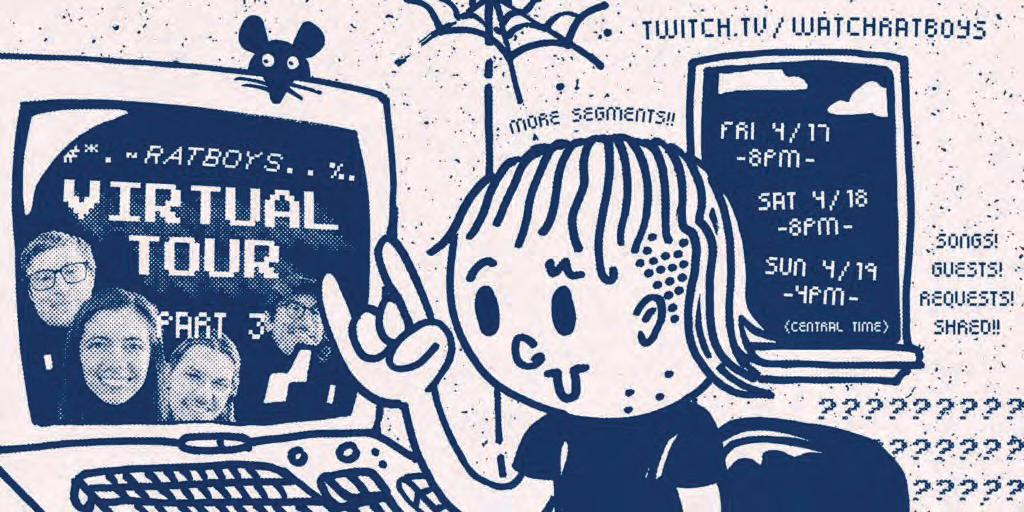
“You have infinite options for the way you mike up instruments,” Steiner says. “Ninetynine percent of Instagram streams, the person is just using their phone, which is fine if you’re just playing by yourself. Twitch allows us to use all of our gear and to have a setup rather than a handheld.”
Steiner and Sagan downloaded Streamlabs Open Broadcast Software, then spent a day watching YouTube tutorials to learn how to use it. “Going into this, we knew absolutely nothing—we didn’t even have a webcam,” Steiner says. “We learned all about the back end of streaming stu . It’s very basic, but it’s all new, and that’s fun. It gives us a project to work on that we can immediately share with people.”
On March 26, the band premiered Ratboys Virtual Tour live on Twitch. So far they’ve hosted three weekends of the show, which combines talking segments and performances from Steiner and Sagan. They typically start on Thursday or Friday night, follow up
24 CHICAGO READER - APRIL 30, 2020 ll
continued from 23
MUSIC
with a Saturday-night show, and close with a Sunday-afternoon matinee. The show’s eightbit-style title card and graphics were all designed by Sagan, and Ratboys use a green screen so they can pretend to broadcast from a new far-flung location each time.
“The first episode, we were in Brazil, in Rio,” Steiner says. “We did a lot of intro, telling people about the concept. It all felt . . . not self-conscious, but aware of how out of my element I was. It’s nice—I don’t feel that way very often when we’re performing.”
The show’s tongue-in-cheek presentation is a natural fit for Steiner and Sagan—they’ve embraced the public-access-show vibe, right down to recording in their basement. Steiner generally stays on-screen, while Sagan bounces back and forth between joining her for performances and working behind the camera. Neumann pitches in as well, moderating the live text chat that runs alongside the stream.
“Sean started to moderate the chat, which was really nice because the people watching started to develop a lot of camaraderie and humor,” Steiner says. “He was encouraging people to talk and have a good time.”
“He’s a real instigator,” Sagan adds.
“With Twitch it’s nice because you have direct contact with the listeners,” says Steiner.


“The three of us are pretty introverted, but we’re humans—we want to have contact with people.”
The intimacy of the Virtual Tour community has helped Steiner feel comfortable taking new risks. “I did a segment called ‘Super New Songs’ where I played really new songs, and stuff like that is really exciting and nerveracking,” she says. “It’s a whole new level of feeling vulnerable—it’s like jumping o a cli into a large body of water. Things like that make you feel self-assured in what you’re doing.”
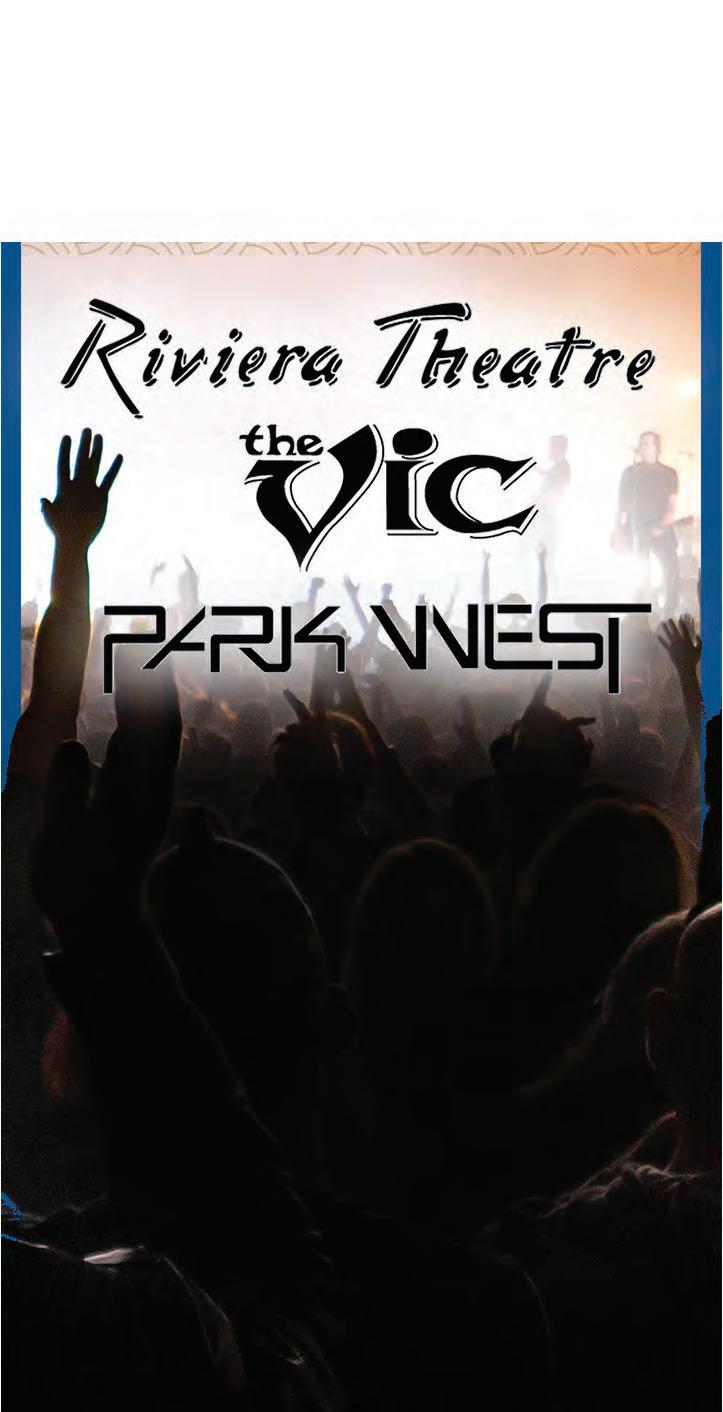
Whether the show streams from Stonehenge, from a Six Flags parking lot, or from the moon, fans keep coming back—sometimes Ratboys see the same people every night.
“There have defi nitely been familiar faces in the chat,” Steiner says. “The cool thing is that a lot of those people are people we know from playing shows. It feels like a lot of the people we’re playing for are the people we’d be playing for on tour—the cool thing is, now they can watch every day.”
So far Ratboys have brought in more than $1,000 in PayPal and Venmo donations via Twitch. Though that’s a small fraction of what they would’ve made on the road, they’re also saving money: they don’t have to pay for gas or lodgings, and it’s cheaper to eat at home. They’ve also sold out a batch of 50 specialedition Virtual Tour shirts. Assuming things ever get back to normal, livestreaming has potential as a new way for Steiner and Sagan to earn income while Ratboys aren’t on tour.
“Once this whole pandemic is in the past and behind us, I’m wondering if all these virtual performances will be looked at as a novelty of the past because at the time it’s all we had,” Steiner says. “Or I wonder if there’s going to be some sort of format or mode of connection that becomes ubiquitous that will . . . not replace traditional live-music performances, but supplement and become something that bands do when they’re home.”
Steiner doesn’t want to look too far ahead, but she’d love to be able to rely more on her music and less on side jobs. “It would be very rewarding for us to be able to come home from a tour, take a few days o to reset, and then have a way to perform for people and still make a connection and potentially still have an income stream,” she says. “That would make me feel so much more fulfilled as a musician—that would oddly enough make me feel even more fulfilled with choosing this as a career. You could go to work in your house. It could be an extra thing that could help us stay sharp and come up with new ideas.”
It’s obviously unclear when Ratboys will be able to return to the road to support Printer’s Devil, but whenever they do, it’ll still be their best record yet. They’re using their time sheltering in place to create something new, and they’re ready to share it any way they can. Ratboys post their Virtual Tour dates on Insta gram and Twitter (on both platforms, their handle is @ratboysband). The show streams live on the band’s Twitch channel, twitch.tv/watchratboys, and past episodes are archived on Twitch and YouTube.
“We’re lucky that the record is out in the world and that we got to play the two release shows in Chicago—it was such an affirmation,” Steiner says. “I didn’t think at all that those would be our last two shows for a long time. But those were the best two shows to enter an involuntary worldwide hiatus.” v
APRIL 30, 2020 - CHICAGO READER 25
@betteryetpod A digital fl yer for the third
weekend
of Ratboys Virtual Tour ILLUSTRATION BY DAVE SAGAN
JAMIE LUDWIG Reader associate editor

Paul Drummond, 13th Floor Elevators: A Visual History Most biographers move along once they’ve published, but some subjects demand further exploration. Paul Drummond, author of the 2007 13th Floor Elevators history Eye Mind , returns with a new look at the world’s first psychedelic band, from the 1950s Texas childhood of singer-guitarist Roky Erickson through the group’s 2015 reunion. The book is filled with photos, poster art, newspaper clips, and other ephemera, but its extensive oral history could easily stand alone.

Mind Melt Video archives Livestreaming abounds while we shelter in place, but maybe you’d rather see an old show you missed.
Local metal promoter Rodney Pawlak has been uploading concert footage from Mind Melt Video Magazine, the cable-access show he ran from 1993 till 2003. His YouTube offerings include alt-rock, punk, and Sunday metal uploads (when he’d usually be hosting Exit’s CMF Metal Sundays). His 1995 Weed Fest Chicago video is a snapshot of another universe, and his trove of Acid Bath shows will fix the tragic shortage of Acid Bath in your life.
National Independent Venue Association

The importance of independent music venues can’t be overstated, and they’re already struggling to survive COVID-19 closures. This week, more than 800 member venues in the National Independent Venue Association (NIVA), including dozens from Illinois, sent a letter to Congress asking for support and relief. In the meantime, you can still support Chicago venue staff by donating to fundraisers.
MARC STRANGER-NAJJAR Bassist of Huntsmen
Thundercat, It Is What It Is No one can deny Thundercat’s prowess, and the fact that he’s breaking into the mainstream as a virtuoso bassist is very encouraging (as my personal mission is to make the bass cool). I love his George Duke–esque singing style, along with his nods to Duke’s compositional approach. He’s also got this sort of sarcastic lyrical voice that’s a reminder that you don’t have to take life so seriously!
Fiona Apple, Fetch the Bolt Cutters Holy shit. What a powerful record. I had other submissions in mind, but Fiona’s new one came out as I was writing and immediately jumped to the front of the line. Her choices across the board are just on another plane of existence: the production, the percussion tones, the captivating lyrics, and of course her perfectly unique voice singing them over the delightful (and almost through-composed) piano parts!
Kate Tempest, The Book of Traps and Lessons This one came out last year, and I’m admittedly just getting into the world of Kate Tempest. I was introduced to this Londonborn poet’s beautiful brain when I listened to her contribution to “Blood of the Past” by UK space-jazz band the Comet Is Coming. Never had I imagined loving poetry and spoken word until I heard what she has to say. Just listen to the Book of Traps and Lessons track “People’s Faces” and try not to cry. Her musical poetry is soul cleansing.

SANFORD PARKER Musician and producer
Muslimgauze, Narcotic This is what acid would sound like. Not like the sounds you hear while tripping, but like if acid were a person, learned to play an instrument, and started a band—it would sound like this album. Bryn Jones released dozens of albums under the Muslimgauze name before he passed away in 1999, but the 1997 release Narcotic is the one that has always stood out to me. It’s been the soundtrack to many of my overnight drives while traveling or on tour (and on acid).
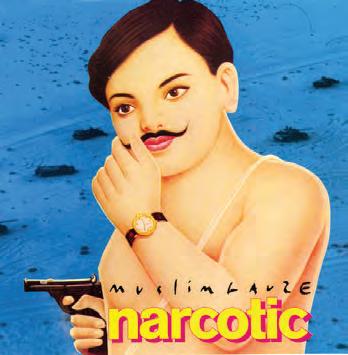
Granular synthesis The process of granular synthesis involves taking an audio sample and splitting it into thousands of grains that can then be pitched, time stretched, and rearranged to create insane-sounding pads and textures. The idea of breaking a sound down into a single tiny grain and then manipulating that single tiny grain is pretty mind-blowing. Add a dark room, lots of reverb, and psychedelics, you’ll have hours of wasted . . . I mean productive time.
Roadburn Festival Based in the Netherlands, Roadburn is like no other fest. It hosts a wide variety of musical acts, including metal, folk, experimental, and electronica. I’ve had the pleasure of playing it six times with five different bands. Unfortunately, it was postponed this year due to the coronavirus, but there are several live releases from previous years available—I highly suggest you check them all out. Better yet, go to Roadburn when you fi nally can and experience it in person. There’s even a hash bar a few blocks away with a neon Old Style sign. I don’t know why—it just is. v
26 CHICAGO READER - APRIL 30, 2020 ll
Paul Drummond’s book 13th Floor Elevators: A Visual History COURTESY ANTHOLOGY EDITIONS
London-born spoken-word poet Kate Tempest JULIAN BROAD
The cover art for the 1997 Muslimgauze album Narcotic
IN ROTATION A Reader staffer shares three musical obsessions, then asks someone (who asks someone else) to take a turn. in partnership with to add your event to TIXREADER.COM, email mroeder@chicagoreader.com MAY 9 Head Talks with Shane Mauss & Sophia Rokhlin @ Laugh Factory SAT MAY 9 Marcella Arguello - Early Show @ North BarSAT MAY 9 Marcella Arguello - Late Show @ North BarSAT MAY 2 Shake it Up: The art of the shaken cocktail @ Online, Make & MuddleSAT MAY 9 Porch Pounders cocktail class @ Online, Make & MuddleSAT MAY 16 Summer Slushies: Frozen boozy slushies @ Online, Make & MuddleSAT APR 30 Literacy & Libations @ Online, Literacy ChicagoTHU MAY 23 Tiki Talk @ Online, Make & MuddleSAT JUNE 6 Naperville Settlement @ Naperville SettlementSAT JUNE 25 Mike & the Moonpies / Tim Gleason @ The Law Office Pub & Music HallTHU JULY 5 Esther Rose @ The Law Office Pub & Music HallSUN
Chicago hardcore veterans Like Rats go full-on death metal on Death Monolith

CHICAGO’S LIKE RATS HAVE been at it for more than a decade. Consisting of current and former members of earth-shaking metal and hardcore acts such as Weekend Nachos, Hate Force, and High Priest, the band started as a brutal, tough-guy hardcore act. But by their second full-length, 2016’s II, they’d begun to incorporate overtly heavy tones and death-grunt vocals into their powerviolence-leaning punk. And the brand-new Death Monolith (Hibernation Release) feels like the band just threw up their hands and said, “Fuck it, we’re a death-metal band now!” The album
has all the best hallmarks of classic death metal: neverending double-bass-drum assaults, animalistic vocals, and relentlessly evil riffing. It also has enough fresh flavor to rank among the best albums of the modern era; Like Rats can grind like Pissgrave and slam like Sanguisugabogg. The production is clear and mean, the rhythms swing with beatdown ferocity, and everyone’s playing is next-level sharp. Death Monolith is an excellent turn for one of Chicago’s best and heaviest acts—here’s hoping they keep plowing down that path.
—LUCA CIMARUSTI


APRIL 30, 2020 - CHICAGO READER 27
Like Rats, Death Monolith Hibernation Release hibernation-release.bandcamp.com/ PICK OF THE WEEK
Recommended and notable releases and critics’ insights for the week of April 30 MUSIC
PETER COOK
Find more music reviews at





































The Bobby Lees, Skin Suit Alive/Natural Sound alive-records.com/artist/the-bobby-lees
Upstart garage punks the Bobby Lees formed a er guitarist-vocalist Sam Quartin moved to Woodstock, New York, and took a suggestion from a friend to recruit her new bandmates from the local School of Rock. Now in her mid-20s, Quartin is an established actress who’s played alongside the likes of Crispin Glover, Michael Pitt, and Marilyn Manson, but in the Bobby Lees she gives you the idea that she might prefer basement shows to red carpets. On the new album Skin Suit (Alive/Natural Sound), produced by Jon Spencer, the band show they’ve got the chops and the weirdness to refresh vintage rock, punk, and blues (they do a gritty take on Bo Diddley’s “I’m a Man”) without the commercialism that has plagued other prominent garage bands of their generation. Quartin’s unpolished vocals o en recall Richard Hell (the record closes with a rousing cover of “Blank Generation”), but the music is memorable enough in its own right to make you want to put highlights such as “Coin” and “Guttermilk” on repeat. The swaggering, minimalist “Ranch Baby” is equally funny and gross, with lead guitarist Nick Casa taking a turn at the mike to ponder a mysterious (and apparently sexy) creamy white substance. On “Last Song,” with its backdrop of sweet, 50s flavored pop, Quartin delivers a take on “crooning” that sounds like Bobby Darin as a serial killer. Like so many other bands, the Bobby Lees had to cancel their spring tour, but with help from a little word of mouth they’ll surely be playing packed punk shows as soon as social-distancing measures allow.
 —JAMIE LUDWIG
—JAMIE LUDWIG
Peter Cottontale, catch Self-released catchpeter.com
A lot of theories about how Chicago hip-hop was supposed to operate have been shattered by the

















events of the past decade—the idea that only one local rapper in a generation could make it big, for instance, or the insistence that the city had a singular sound. While drill became the dominant underground wave, proving that young Chicago rappers and producers with few means or connections could build their own cottage industry outside the mainstream, a panoply of other artists showed how many dimensions the scene actually has: the Era devised “footworking with words,” DLow brought bopping’s euphoric sound to the Billboard Hot 100, and Supa Bwe mined the melodic aggression of screamo years before “Soundcloud rap” broke. At the same time, a loose web of producers laid the groundwork for a style that’s become emblematic of the city’s “alternative hip-hop” community. Most notable among them is Peter Wilkins, better known as Peter Cottontale, whose nuanced blend of neosoul, gospel, R&B, and post- College Dropout hip-hop has enriched some of the best material from local breakout acts such as Jamila Woods, Vic Mensa, and Chance the Rapper. These days Wilkins is best known as bandleader of the Social Experiment, which formed to tour behind Chance the Rapper on Acid Rap in 2013, and he’s played such an important role in every Chance release since then that Chance brought him onstage at the 2017 Grammys for two of his three awards. For Wilkins’s debut album, Catch, he tapped into their growing network of friends and collaborators, including rapper Tobi Lou, R&B star Jeremih, and inimitable gospel star Kirk Franklin. ( Catch also contains one of the first appearances by Towkio since the Chicago rapper was publicly accused of sexual assault in January 2019.) Wilkins recently told the Tribune that Catch is bathed in gospel’s upliing spirit but doesn’t follow genre traditions, and that’s a fair self-assessment: he imbues his songs with R&B tenderness, pop moodiness, and a hint of neosoul sensuality to create atmospheres that feel divine. —LEOR GALIL

28 CHICAGO READER - APRIL 30, 2020 ll
chicagoreader.com/soundboard
The Bobby Lees JOHN SWAB
MUSIC continued from 27
Due to business closings and for safety purposes, the Chicago Reader is going biweekly with a print run to 600+ locations, including our box route. On the o weeks (April 9, 23, May 7) the Reader is just being distributed as a free PDF, with a small press run to ful ll subscriber and library mailings. We are also making a limited number of copies available for special short-term subscriptions, 12 weeks for $50, and every week’s issue will be mailed to your home. Just a few hundred copies will be sold of these very limited souvenir editions of the Reader: secure.actblue.com/donate/chicago-reader-print-12 Important Reader News Thank you, The Reader team Find the full curated PDF download of the Reader at by Wednesday each week. chicagoreader.com/issues
Sandy Ewen, You Win Gilgongo









































gilgongorecords.storenvy.com/products/29789617sandy-ewen-you-win-lp-gggr-099
Sandy Ewen’s music is a constant series of negotiations. She’s constantly seeing what new sounds she can get out of her guitar, using found objects such as steel-wool scrubbing pads, dowels, bolts, cat-grooming brushes, and lengths of chalk. She’s also an inveterate collaborator who relishes chances to test her compatibility with new acquaintances or to explore possibilities within her enduring partnerships with drummer Weasel Walter, bassist Damon Smith, and guitarist Tom Carter. When she plays with others, Ewen’s style changes according to their input, but her solo work is much more consistent, focusing on gradual transformations of timbre and texture. On the side-length title track of You Win , which is her first solo LP a er a slew of CDs and cassettes, she works patiently through bell-like chimes, blown-speaker bursts, elongated whines, and wobbly resonances, testing each element against a couple of others. The shorter pieces on side two develop more quickly, but each one resolves with a satisfying completeness that demonstrates her concern with outcomes as well as processes. Ewen is an architect and visual artist as well as a musician, and she has used architectural- rendering software to compose videos for each of the albums tracks—their constantly morphing shapes and images are as texturally rich as the music itself.
—BILL MEYER


Orkesta Mendoza, Curandero Cosmica Artists
orkesta-mendoza.bandcamp.com/album/ curandero

The first time I saw Orkesta Mendoza was at SXSW about five years ago, and the group had already perfected an enormous, vintage Latin big-band sound and intense, punk-like sensibility unparalleled in the Latin scene. Led by bandleader, singer, and guitarist Sergio Mendoza (a longtime mem-



ber of Calexico and Devotchka), the Tucson indie mambo group cross and recross the southern border of the U.S. on their new album, Curandero (Cosmica Artists), topping a foundation of 60s boogaloo with blends of rock, pop, and cumbia and adorning the whole thing with mariachi-infused, mamboinfluenced horns. The new album follows 2016’s ¡Vamos a Guarachar!, and its 14 exhilarating tunes— sung in a mix of Spanish, English, and Spanglish— express the musical DNA of Nogales, Sonora, where Mendoza was born, and the adjacent Nogales, Arizona, where he was raised. On “Eres Oficial,” reminiscent of the 1960s McCoys hit “Hang on Sloopy” (a tune that topped the Mexican charts in 1965 a er it was revamped as “Es Lupe” by Los Johnny Jets), singer Quetzal Guerrero makes a cameo, adding swinging vocals to the song’s carefree guitar chords and drumbeat-heavy grooves. Other stellar guests on Curandero include Devotchka’s Nick Urata, who lends his smooth voice to a funky vintage Mexican cumbia on “A Little Space,” and Spanish singer Amparo Sánchez, who appears on the immigration-reform-themed “Boogaloo Arizona.” The track “Hoodoo Voodoo Queen,” reminiscent of 1940s Andrews Sisters numbers, shines with impossibly tight harmonies by Moira Smiley, Carrie Rodriguez, and Gaby Moreno, spread across languid pedal-steel twangs and punctuated by bold, honking sax. “Bora Bora” has a smoky, loungey feel, but its winks to mambo and its synchronized horns keep it from feeling cheesy. “The girls are wearing the red dresses,” the band croons on the song’s brief chorus. “They’re waiting to dance and twist.” Curandero is the perfect album for anyone who’s ever felt that sort of anticipation.
—CATALINA MARIA JOHNSON



V.v. Lightbody, Make a Shrine or Burn It Acrophase vvlightbody.bandcamp.com/album/make-ashrine-or-burn-it
Songwriter and multi-instrumentalist Vivian McConnell comes from a musical family, and she began

APRIL 30, 2020 - CHICAGO READER 29
V.V. Lightbody RACHEL WINSLOW
MUSIC Thursday, April 30 at 7pm A live-stream concert by Chicago artists playing for a cause, not applause. WindyCityIndie.com Never miss a show again. EARLY WARNINGS chicagoreader.com/early Chicago's Free Weekly Since 1971 We Couldn't Be Free Without You— Support Community Journalism chicagoreader.com/donate u THE
MUSIC


Summit Chicago



enmeshing herself in Chicago’s music scene in the early 2010s, around the time she moved here from Urbana. By then she and her oldest brother, Stan, were playing together in the indie-rock band Santah, and McConnell had also joined indie four-piece Grandkids; she’s since become part of several overlapping underground scenes. Lately her main artistic focus has been her solo project, where she uses the name V.V. Lightbody to honor her pianist grandmother, Virginia Lightbody, but she also provides auxiliary guitar, flute, keyboards, or vocals for a hodgepodge of other acts. She’s contributed to Slow Mass’s thundering posthardcore (2018’s On Watch ), Accessory’s sleepy lo-fi ditties (2018’s Blue Tape ), and Poplife’s effervescent take on adult contemporary, which they call “Bruce jazz” (the 2019 single “Bad Attitude”). Last year, McConnell debuted a collaboration called Valebol with Dos Santos percussionist Daniel Villarreal-Carrillo, and though they haven’t released any recordings yet, YouTube footage of their inaugural performance at the Empty Bottle last June has whet my appetite. On her second album as V.V. Lightbody, Make a Shrine or Burn It (Acrophase), McConnell blends light bossa nova percussion, austere indierock rhythms, snaking guitars, and tender folk vocals with a gentleness that belies the hard work and discipline required to pull off such intricate material. Though McConnell has called her style “nap rock,” she’s more likely to hypnotize you than put you to sleep—the oscillating keys and mellow sax on “BYOB” create an intriguing depth of sound that invites active listening.
 —LEOR GALIL
—LEOR GALIL




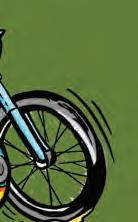



 White Ppl, White Ppl Self-released soundcloud.com/whiteppl
White Ppl, White Ppl Self-released soundcloud.com/whiteppl












In a 2019 interview for WBEZ’s Weekend Passport, Filipinx producer-vocalist Ano Ba said they were inspired to start their own group after seeing a garage band at a favorite Logan Square bar that was made up entirely of white dudes. Ano thought it’d be cheeky to recruit other POC musicians to make garage rock under the name “White Ppl.” White Ppl didn’t end up making three-chord bashers, but Ano teamed up with Black hip-hop artist Cado San and Filipinx vocalist Elly Tier to unlock an alchemical mix that no other configuration of musicians could replicate. A er their first session, they emerged in October 2018 with the kaleidoscopic jam “Ilovemybb,” which remixes the past two decades of pop: early dubstep’s haunted vocal samples, funk carioca’s lithe percussion, alt-R&B’s brooding and romantic vocal melodies, bedroom pop’s mellow keys, and harsh sax a la TV on the Radio. Since then they’ve released only two other singles—the softhearted, nostalgic “The Way U Move” and the subtly triumphant “Open Door Policy”—and all three appear on their six-track self-titled debut EP. White Ppl’s lyrics remain firmly fixed on matters of love, but the group’s sonic palette continues to expand—for “Make Me Better,” one of the new songs from the EP, they pull from modern-funk’s supple rhythms, trip-hop’s cool-inthe-pocket melodies, and symphonic pop’s strings. Though White Ppl ends too soon, it shows a glimpse of one of the most promising acts in town.
 GALIL v
GALIL v











30 CHICAGO READER - APRIL 30, 2020 ll
—LEOR
White Ppl DAIMON HAMPTON
“I take great pride in being the owner of Summit Chicago for over 22 years. The Summit pioneered the dedicated urban meeting environment and now it is the largest growing sector in the meetings industry. Leading the Summit has afforded me the opportunity to build, nurture, and support my team and our clients.” Louise Silberman, Owner 312.938.2000 | info@summitchicago.com 205 N. Michigan Ave. 10th Floor Chicago, IL 60601 www.summitchicago.com
BIT.LY/GOOSEDELIVERS continued from 29
EARLY WARNINGS
WOLF
VETERAN CHICAGO hip-hop activist, manager, and promoter Jamie “J. Milla” Sevier died Saturday, April 18, at age 47. As a kid, Sevier got into breakdancing and graffiti, and he’d joined Chi-ROCK Nation by the time he met longtime friend Carrico “Kingdom Rock” Sanders, founder of the Ill State Assassins crew, in the early 1990s. They’d crossed paths because both were organizing against an attempt to ban hip-hop from local radio. “Jamie has always been the bullhorn for Chicago,” Sanders says. “I will also call him ‘the plug’—there’s a few of us that connect people together, and Jamie was one.” Sanders and Sevier went on to promote hip-hop events together (Sevier also became an Ill State member), and they both worked for Operation PUSH—Sanders as a youth organizer, Sevier as national youth director (his godmother is PUSH Excel national education director Janette Wilson). In the 2000s, Sevier served as president of the nonprofit People Reclaiming Ourselves (whose board included Chico DeBarge) and hosted cable-access show Hip-Hop 2nite. On Sunday, April 19, Common honored Sevier during the Last Dance preshow on SportsCenter : “Rest in peace to my man Jamie—God bless his soul.”
Patrick Holbrook’s solo darkwave project Well Yells trafficks in the sonics of isolation—in 2018, Gossip Wolf said his Skunk cassette “sounds like it’s coming from a captive who’s given up on ever escaping from the bottom of Buffalo Bill’s pit in The Silence of the Lambs .” This month, Well Yells dropped the excellent full-length We Mirror the Dead, recorded with Adam Stilson at Decade Music Studios. Holbrook says he’s “broken into a new realm,” using “more industrial sounds, maybe even echoes of witch house.” Last week, Holbrook posted an eerie, gripping video for the propulsive “Kill the King,” filmed just a er the stay-at-home order came down. He had a release party booked at Cafe Mustache in May—let’s hope it’s rescheduled! —J.R. NELSON AND LEOR GALIL
Got a tip? Tweet @Gossip_Wolf or e-mail gossipwolf@chicagoreader.com.

NEW
Align, Tvvin, Levity 9/10, 8:30 PM, Schubas, 18+ James Arthur 9/24, 7 PM; 9/26, 8 PM, House of Blues b Nicole Atkins 8/12, 7:30 PM, Lincoln Hall, 18+ Bad Sneakers Orchestra 6/12, 8:30 PM, FitzGerald’s, Berwyn Selwyn Birchwood 7/24, 8 PM, SPACE, Evanston b Camelphat 11/13, 10 PM, Radius Chicago, 18+ Cannonball 6/26, 9 PM, FitzGerald’s, Berwyn Rose Cousins 6/14, 7 PM, SPACE, Evanston b Charley Crockett 6/11, 8 PM, City Winery b Christopher Cross 8/13, 8 PM, Genesee Theatre, Waukegan b

Greg Dulli, Joseph Arthur 9/14, 9 PM, Metro, 18+ Hazel English 6/4, 8 PM, Beat Kitchen
Fetty Wap, Emilie Brooklyn 7/18, 7 PM, House of Blues b Future Hits, Angela James 10/10, 3 PM, Schubas b Evan Giia 8/14, 9 PM, Schubas, 18+
Vance Gilbert 6/7, 2 PM, SPACE, Evanston b Happy Together Tour featuring Turtles, Chuck Negron, Association, Mark Lindsay, Buckinghams, Vogues, Cowsills 8/8, 7:30 PM, Genesee Theatre, Waukegan b Sophie B. Hawkins 10/13, 8 PM, City Winery b Lilly Hiatt, Harmaleighs 8/19, 8 PM, Schubas, 18+ Hippie Sabotage, Sebastian Paul 8/21, 9 PM, Aragon Ballroom, 18+ Hombres G 7/16, 8 PM, House of Blues, 17+ I Am Fest 8/15, 2:30 PM, House of Blues b
Robert Earl Keen 12/27, 8 PM, Thalia Hall, 17+ Kindo, Milquetoast & Co. 8/18, 8 PM, Schubas, 18+ Chris Knight, Joe Stamm 11/5, 8 PM, City Winery b Sonny Landreth 7/10, 8 PM, SPACE, Evanston b Lane 8 8/22, 9 PM, Aragon Ballroom, 18+ Las Salseras con Carpacho featuring Carpacho y Su Super Combo 6/5, 8:30 PM, Szold Hall, Old Town School of Folk Music b Little River Band, John Ford Coley 6/11, 7:30 PM, Genesee Theatre, Waukegan b Lowest Pair 6/3, 8 PM, SPACE, Evanston b No Limits Music Festival featuring Simpleton & City Folk, Owen & the Ghosts, Platform 29, Like Oscar Wilde, and more 8/28, 8 PM, Beat Kitchen Nombe, Bad Child 8/23, 8 PM, Lincoln Hall b Origami Angel, Mover Shaker, Equipment, Lettering 6/5, 8 PM, Beat Kitchen, 17+ Over the Rhine 6/27, 8 PM, SPACE, Evanston b Porridge Radio 7/30, 9 PM, Beat Kitchen, 17+ Red Wanting Blue 11/12, 7:30 PM, City Winery b Reel Big Fish, Aquabats 6/4, 6:30 PM, House of Blues b Residents 5/7/21, 9 PM, Lincoln Hall Revivalists 10/24, 8 PM, Aragon Ballroom, 17+ LeAnn Rimes 7/16, 7 PM, Genesee Theatre, Waukegan b Dave Simonett 11/15, 8 PM, City Winery b Simrit 7/7, 8 PM, City Winery b
Special Consensus 10/24, 6 PM, Maurer Hall, Old Town School of Folk Music b
Lennon Stella, Kevin Garrett 7/11, 7 PM, House of Blues b Katie Toupin 8/27, 8 PM, Schubas, 18+ Trace Mountains 5/20, 8 PM, Subterranean, 17+ Phil Vassar, Lexie Hayden 9/18, 8 PM, Joe’s Live, Rosemont Susan Werner 10/25, 7 PM, Maurer Hall, Old Town School of Folk Music b Kenny White 6/19, 8 PM, Szold Hall, Old Town School of Folk Music b
Webb Wilder & the Beatnecks 6/20, 8 PM, FitzGerald’s, Berwyn
UPDATED
NOTE: This is a selection of the many concerts that were canceled or postponed in light of ongoing concerns about COVID-19. We suggest that you contact the point of purchase if you need information about exchanges or refunds.
Airbourne, Tuk Smith & the Restless Hearts 5/14, 8 PM, Bottom Lounge, canceled AJJ, Xiu Xiu, Emperor X 3/12/21, 7 PM, Metro, rescheduled b Phil Angotti, Mark Watson Band 6/13, 8:30 PM, FitzGerald’s, Berwyn, rescheduled Anti-Flag, Bad Cop/Bad Cop, Grumpster 5/7, 6:45 PM, Cobra Lounge, postponed until a date to be determined Bon Jovi, Bryan Adams 7/21, 7:30 PM, United Center, canceled Braids 9/10, 9:15 PM, Empty Bottle, rescheduled Budos Band 9/5, 8:30 PM, Thalia Hall, rescheduled, 17+ The Business, Bar Stool Preachers 6/9, 7 PM, Reggies’
Rock Club, canceled Car Seat Headrest 5/29-5/30, 7:30 PM, the Vic, canceled Caribou, Kaitlyn Aurelia Smith 10/22, 7:30 PM, Riviera Theatre, rescheduled; tickets purchased for original date will be honored, 18+ Caspian 6/5, 9 PM, Lincoln Hall, canceled Circa Survive 5/11, 6:30 PM, Concord Music Hall, postponed until a date to be determined, 17+ Curio 6/13, 8 PM, Reggies’ Music Joint, canceled Dawg Trio 5/30, 6 and 9 PM, City Winery, postponed until a date to be determined b Daybreaker 5/5, Live Wire Lounge, canceled Delta Spirit, Hideout 8/5, 9 PM, Thalia Hall, rescheduled, 17+
Dreadwolf 9/10, 9 PM, GMan Tavern, rescheduled Einstürzende Neubauten 10/23, 7:30 PM, the Vic, canceled Bryan Eng 6/8, 8 PM, SPACE, Evanston, canceled May Erlewine & the Woody Goss Band 7/22, 8 PM, SPACE, Evanston, rescheduled b
Fab Faux 9/19, 8 PM, Park West, rescheduled b Failure 7/9-7/11, 8 PM, Thalia Hall, 7/11 is sold out, 17+
Alejandro Fernández, Christian Nodal 7/25, 8 PM, Allstate Arena, Rosemont, rescheduled; tickets purchased for the original date will be honored b
Julia Fordham 9/27, 7:30 PM, SPACE, Evanston, rescheduled b
Foreign Air 6/9, 8 PM, Schubas, canceled Fuzz 2/4/21, 8:30 PM, Thalia Hall, rescheduled, 17+
Charlie Hunter & Lucy Woodward 7/14, 7 PM, SPACE, Evanston, rescheduled; tickets purchased for the original date will be honored b
Christone “Kingfish” Ingram 6/5, 9 PM, SPACE, Evanston, canceled
Ionnalee, Iamamiwhoami, Tungorna 5/7, 9 PM, Metro, postponed until a date to be determined, 18+
Lucy Kaplansky 5/17, 7 PM, Szold Hall, Old Town School of Folk Music, postponed until a date to be determined b La Oreja De Van Gogh 6/8, 8 PM, House of Blues, postponed until a date to be determined, 17+
Bettye LaVette 6/9, 8 PM, City Winery, postponed until a date to be determined b Lost Dog Street Band 12/15, 8 PM, Lincoln Hall, rescheduled; tickets purchased for original date will be honored, 18+
Miku Expo 2020 featuring
Hatsune Miku 9/25, 8 PM, Aragon Ballroom, rescheduled; tickets purchased for the original date will be honored b
Andy Milne & Unison 5/14, 8:30 PM, Constellation, canceled, 18+
Modern English, Bootblacks 9/9, 8 PM, SPACE, Evanston, rescheduled b
Nada Surf 4/23/21, 8:30 PM, Thalia Hall, rescheduled, 17+
New Found Glory, Simple Plan, Knuckle Puck 6/13, 7 PM, Concord Music Hall, postponed until a date to be determined b
New Orleans Suspects 10/30, 8:30 PM, FitzGerald’s, Berwyn, rescheduled
Miles Nielsen & the Rusted Hearts 9/18, 8:30 PM, FitzGerald’s, Berwyn, rescheduled Nothing Nowhere 5/15, 7 PM, House of Blues, canceled Ocean Alley 6/25, 8 PM, Lincoln Hall, canceled
Oozing Wound, No Men, Dim 5/16, 9:30 PM, Empty Bottle, postponed until a date to be determined
Judith Owen, Pedro Segundo 8/5, 8 PM, SPACE, Evanston, rescheduled; tickets purchased for the original date will be honored b
Pancho Barraza 10/18, 8 PM, Rosemont Theatre, Rosemont, rescheduled; tickets purchased for the original date will be honored b
Noam Pikelny & Andrew Marlin 5/10, 2 PM, Maurer Hall, Old Town School of Folk Music, postponed until a date to be determined b
Pokey LaFarge, Esther Rose 2/19/21, 8:30 PM, Thalia Hall, rescheduled, 17+
Pop Evil 6/26, 7 PM, Bottom Lounge, postponed until a date to be determined, 17+ Protomartyr 6/28, 8:30 PM, Thalia Hall, canceled, 17+ Rad Trads 5/24, 7:30 PM, SPACE, Evanston, canceled b
Ramon Ayala 11/1, 8 PM, Rosemont Theatre, Rosemont, rescheduled; tickets purchased for the original date will be honored b
Dan Rodriguez 8/8, 8 PM, SPACE, Evanston, rescheduled b
Ruki Vverh 5/31, 8 PM, Concord Music Hall, postponed until a date to be determined b v
APRIL 30, 2020 - CHICAGO READER 31
Never miss a show again. Sign up for the newsletter at chicagoreader. com/early
Hazel English COURTESY
THE ARTIST CHICAGO SHOWS YOU SHOULD KNOW ABOUT IN THE WEEKS TO COME b ALL AGES F
A furry ear to the ground of the local music scene
GOSSIP
WOLF
BY
KEITH
HERZIK
OPINION
vision of Dr. Caroline Pukall in the Sexual Health Research Lab. Jackowich has published numerous studies on Persistent Genital Arousal Disorder (PGAD), a condition characterized by a constant or frequently recurring state of genital arousal—sensations, sensitivity, swelling—in the absence of sexual desire.
“In other words, there is a disconnect between what is happening in one’s body and mind,” said Jackowich, “and this can be both distressing and distracting.”
And while you would think stress would tank your libido—and preliminary research shows that the pandemic is tanking more libidos than it’s not—stress and anxiety can actually be triggers for PGAD.
SAVAGE LOVE
The pandemic can’t kill this libido

A problem you can’t masturbate out
By DAN SAVAGE

Q: I’m a 31-year-old female. Last week I suddenly started to experience an overwhelming, compulsive, and near-constant state of physical arousal. I’ve masturbated so much looking for relief that my entire lower region is super sore and swollen and still, it’s like my whole body is pulsating with this electric arousal telling me to ignore the pain and do it again. I have no idea if it’s normal to suddenly have such a spike in libido and I know a lot of people will say they wish they had this problem but it’s interfering with my daily activities because I can’t focus on anything else. My college classes are suffering because of it. I’ve even had to remove my clitoral hood piercing, which I’ve had for over ten years! I feel like I have all of the reasons—high anxiety related to the pandemic, being stuck with an alcoholic boyfriend in the house, tons of homework, finances are low—to warrant a lack of arousal so why am I drowning in it? Everything I’m learning in class states that sexual desire lowers throughout the lifespan so why am I literally pulsating with it? I really don’t want to call my doctor if I don’t have to.
—CHRONICALLY AROUSED
A: “There’s a general belief that sexual arousal is always wanted—and the more the better,” said Robyn Jackowich. “But in reality, persistent and unwanted sexual arousal can be very distressing.”
Jackowich is a PhD candidate at Queen’s University, where she works under the super-

As you’ve learned, CA, you can’t masturbate your way out of this. So what do you do? Unfortunately, it’s the thing you’d really rather not do: call your doctor.
“It’s important to meet with a knowledgeable health-care provider to ensure there is not another concern present that may be responsible for the symptoms and to access treatment,” said Jackowich. “Research on treatments for PGAD is relatively new, so it can be helpful to meet with a team of different health-care providers to find what treatments would be most effective for you specifically. This could include a gynecologist, urologist, pelvic floor physical therapist, neurologist, and/or psychologist with expertise in sex therapy.”
Talking with your doctor about this may be embarrassing, I realize, and it doesn’t help that many doctors are unfamiliar with PGAD. Jackowich actually recommends bringing printouts of information pages and research papers about the condition to your appointment and sharing them with your physician. And if your doc doesn’t take your distress seriously and/ or refuses to refer you to the specialists you need to see, CA, then you’ll have to get yourself a new doctor. (You can find those information pages and research papers at sexlab. ca/pgad, where you can also learn about currently available treatments and join support groups for sufferers.)
“More awareness of PGAD and research on this condition is needed to help understand the symptoms and develop effective treatments,” said Jackowich. “If you experience these symptoms and would like to contribute to ongoing research efforts, the Queen’s University Sexual Health Research Lab is seeking participants for an online study.” To take part in that online survey, go to sexlab.ca/pgad,
32 CHICAGO READER - APRIL 30, 2020 ll
JOE NEWTON
Whitney Wasson Instagram: @soberrabbit Twitter:@boozetornado • Website:thewhitneywasson.com 22 ChicagoReaderColoringBook Proceeds will be split between the Reader and the more than 50 artists who contributed illustrations. $30 for PDF download $45 for limited edition printed book and PDF download Or send checks to: Chicago Reader Suite 102 2930 S. Michigan Avenue Chicago, Illinois 60616 For copies of this book, either in PDF form or as a printed book, see: chicagoreader.com/coloringbook Provide your name and mailing address and say this is for a coloring book on the memo line.
OPINION
click on “participate,” and scroll down to the “OLIVE Study.”












Q: I’ve rekindled a romance with an ex from a decade ago. We are long distance right now but getting very close. We have one recurring problem though. She does not like that I am friends with another ex. That ex has actually been a close friend for a very long time and our friendship means a lot to me. Our romantic relationship only lasted a few months. But since we did have a romantic relationship once, my current girlfriend sees my ex as a threat. I have reassured her several times that the relationship is in the past and we are now only friends. But my girlfriend doesn’t want me to communicate with her at all. She wants me to unfriend her on Facebook and unfollow her Instagram and at least once a week she asks if we have been in contact. It is hard for me to throw a friend away in order to be in a relationship. Even though I don’t talk to my ex/friend all that regularly, I would like the option to at least check in every once in a while. Cutting her out of my life completely feels like a kind of death. I wish there was some way I could find a compromise but this seems to be one of those “all or nothing” things. I also don’t like this feeling of not being trusted and fear it could lead to other problems down the line.
UNHAPPY GIRLFRIEND HAS SENSITIVITIES
A: I can see why your current girlfriend might feel threatened by your relationship with an ex, UGHS, seeing as she—your current girlfriend—was until very recently just another one of your exes. Since you got back together with her, the green-eyed monster whispers in her ear, what’s to stop you from getting back together with your other ex? What the green-eyed monster doesn’t say, of course, is that you had every opportunity to get back together with your ex and didn’t. And cutting off your ex now doesn’t mean you can’t get back together with her later. And what’s to stop you from getting together with one of the 3.5 billion women you haven’t already dated?
You have to take a hard line on this. Tell your current you’re happy to provide her with a little reassurance when she’s feeling insecure
about your ex but you’re not going to unfriend or unfollow her or anyone else. You can make an appeal to reason—you wouldn’t be with your current girlfriend if you were the sort of person who cut off contact with his exes—but if your current girlfriend is the irrationally jealous type . . . well, an appeal to reason won’t help. Irrationally jealous people are by definition incapable of seeing reason, UGHS, which is why they must be shown doors.
Q: This isn’t a sexy question, but you are wise and I am confused. I have been friends with a woman for about 16 years. She’s very funny, creative, loves to have a good time. She’s also intense, not very bright, and my family and friends do not like her around. Now that we’re grown we do not see each other o en, but I’ve been glad to maintain a friendship with her and get together now and again. Enter: my wedding. At the reception she made a fool of herself (and me) by going on some strange, racist rant. The racist thing really surprised and disappointed me and when I asked her about it she shrugged it off like, “Oh, just add that to the list of dumb things I do when I’m drunk.” Other things she’d done when she’s drunk: two DUIs, waking up in jail with an assault charge, having sex with strangers, etc. It’s been about seven months since my wedding and I’ve basically been ignoring her while trying to decide what to do. I love my friend, but I do not want her hurting anyone else on my watch. Do I call her up and end it? See her once a year when no one’s around? Ignore her until she dies? —LOYAL TO A FAULT

A: Tell your racist friend to give you a call a er she gets sober and confront her about her racism then—you know, when she’s actually capable of remembering the conversation, reflecting on what you had to say, and perhaps changing for the better. If she can’t get both sober and better, LTAF, make sure she isn’t registered to vote and then ignore her until she dies.


Send



mail@savagelove.

APRIL 30, 2020 - CHICAGO READER 33
v
letters to
net. Download the Savage Lovecast at savagelovecast.com. @fakedansavage the cannabis platform a Reader resource for the canna curious nuMed.com | 1308 W. North Ave Chicago’s friendliest cannabis shop Thursdays on Cannabis Conversations chicagoreader.com/joravsky Cannabis Conversations chicagoreader.com/ joravsky To advertise, call 312-392-2934 or email ads@chicagoreader.com www.neuromedici.com 312-772-2313 Findouttoday ifmedical cannabisorinfusiontherapyis rightforyou.Telemedavailable! Yourpartnersinhealthandwellness. Serving medical cannabis patients since 2015. An Essential Calm. Day or Night. Whole-plant hemp formulations for peace of mind and body. mineralhealth.co ADVOCATING FOR BETTER PATIENT WELL BEING CONSUMER SAFETY EQUITY AND INCLUSION JOB CREATION COMMUNITY INVESTMENT AND THE RESPONSIBLE USE OF CANNABIS WWW . CBAIL . ORG CANNABIS BUSINESS ASSOCIATION OF ILLINOIS GET INVOLVED! THE STATEWIDE VOICE OF ILLINOIS’ CANNABIS INDUSTRY The Reader 420 Companion is filled with great recipes, activities and coloring pages Your purchase supports the Reader. 15% of the proceeds will be donated to the Chicago Coalition for the Homeless. chicagoreader.com/420book
CLASSIFIEDS
LEGAL
This letter is to notify that on May 25, 2020 at 9:30 a.m. an auction will be held at 83rd & Halsted Self Storage, Inc., located at 8316 S. Birkhoff Ave, Chicago, IL 60620, to sell the following articles held within said storage units to enforce a lien existing under the laws of the state of Illinois.
260 Dorian Richwell
157 Kyrih Faulkner
304 Reginald Bullock
This letter is to notify that on May 25, 2020 at 9:30 a.m. an auction will be held at Hyde Park Self Storage, Inc., located at 5155 S. Cottage Grove Ave, Chicago, IL 60615, to sell the following articles held within said storage units to enforce a lien existing under the laws of the state of Illinois.
544 Chanel Long
469 Phyllis Robinson
135 George Kagan
427 Thomas McElroy
71 Lazinnial Brandon
379 Mkosi M. Miller
10169 Regina M. Hightower
10124 Steven Watson
84 Patricia Baines
377 Melvin Golden
10129 Steven Watson
53 Kimberly Blair
JOBS
Network Objects, Inc. seeks combo of education, training and experience equiv. to Bachelor’s + 2yrs exp/ equiv.: SAP SD Vistex Functional Consultant (NSVFC20): SAP SD/MM, EDI, FICO, Sterling. Mail resume with job ID to HR: 2300 Barrington Road, Suite 400, Hoffman Estates, IL 60169. Unanticipated work site locations throughout U.S. Foreign equiv. accepted.
Engineering, or related field in quantitative area of study. Must have 1 yr exp in a Trading role, such as Derivatives Trader, Junior Trader or similar. Work experience must have included use of Python. Must pass timed math exam. Multiple positions.
JOBS
365 William Carpenter
10121 Michael B. Weaver
This letter is to notify that on May 25, 2020 at 9:30 a.m. an auction will be held at South Shore Self Storage, Inc., located at 7843 S. Exchange Ave, Chicago, IL 60649, to sell the following articles held within said storage units to enforce a lien existing under the laws of the state of Illinois.
122 Johnnie Howard
S027 Bryon Demons
417 Victor Clopton
Diane Taylor
344 Jerome Cheetam
412 Douglas Lucas
This letter is to notify that on May 25, 2020 at 9:30 a.m. an auction will be held at Aaron Bros. Self-Storage, Inc., located at 4034 S. Michigan Ave, Chicago, IL 60653, to sell the following articles held within said storage units to enforce a lien existing under the laws of the state of Illinois.
208 Derrick Frye
229 Ishmael McDaniels
321 Nona Lee Moore
2000 Nina Powell
Tanya Lyda
Nona Lee Moore
580 Jamal Portluck
Nona Lee Moore
558 Kamla Ronan
345 Kermit Waddy
552 Michael Weston
585 Danisha White
Assurance Supervisor –(Chicago, IL) RSM: Prep, examine & analyze audit work papers, financial statements & related disclosures & internal control letters w/ focus on quality, thoroughness, & accuracy. Reqs: Bach of science (or for equiv) in acct’ing, fin or rel’d. 1 yr exp as an accountant or rel’d, which must incl: compile separate & consolidated financial statements in accordance w/ IFRS & IFRS for small & midsized enterprises; planning, fieldwork & finalization of independent audit engagements in accordance w/ ISA for clients in not-for-profit, retail, manufacturing, real estate & aviation industries; & using caseware audit software to perform/complete audit related tasks.
Mail resumes to: Attn: C Volkening - #1957, 1 S. Wacker Dr, S. 800, Chicago, IL, 60606
Akuna Capital LLC has the following Open Positions in Chicago IL:
1. Mid-Level Quantitative Research Must have MS in Stats, Compu Sci, Math, Phys, or related field. Must have coursework in C or C++ programming, numerical analysis & probability modeling. Must have completed internship or at least 2 yrs of research exp using advanced mathematical analysis & modeling. Must pass coding exam. Multiple positions.
2. Sr. Developer, Quantitative Trading/ Python. Must have BS in Compu Sci, Software Eng, or related field & 5 yrs exp as Developer or related role that included developing applications in Python & C++. In lieu of BS & 5 yrs exp, will accept MS in stated fields & at least 1 yr exp in developing applications in Python & C++. Must pass coding exam. Multiple positions.
3. Metals Options Trader. Must have BS or equivalent in Math,
Direct resumes to: Megan Suerth, Akuna Capital LLC 333 S Wabash, Suite 2600, Chicago, IL 60604. If hired, must provide document confirming authorization to work legally and permanently in the U.S. Employment is at its offices in Chicago at 333 S Wabash Ave.
Sr. Software Dev Engineer in Test needed by PEAK6 Group, LLC in Chicago, IL to develop & implement financial industry app software. Reqs Master’s or foreign equiv in Comp Sci or related field & 2 yrs exp designing & developing test strategies to build automated testing frameworks. Exp must include automation testing, test planning & strategy, exp with Agile, Exploratory, Selenium Web driver, Selenium IDE, Test NG Framework, Gradle, Java & Python. To apply, mail resume to L. Moore, PEAK6 Group, 141 W Jackson Blvd, Ste 500, Chicago, IL 60604.
IT Business Analyst - Data Warehouse, HSBC Technology & Services (USA) Inc. Arlington Heights, IL. Works with each Global Business/Function to consolidate and resolve cross functional data initiatives, projects and issues. Reqs: Must have BA or foreign equival in Comp Sci, IT, or rel fld,+5 years of progress, postbacc rel work experience. Quali exp must include: Banking exp, incl the area of Data mgnt of Loans & Deposits, Personal banking, Cards, Mortgage, Risk & Compliance and Finance data with design, architecture and dashboards. Data mgmt, incl industry data mgmt practice, data mgmt processes. Data warehouse & ETL tools (DataStage and QualityStage, Information Analyzer, Alteryx, File Transmission (SFTP, Connect direct), Object storage). Relational data modeling (ERD) and SQL using Microsoft SQL Server, Oracle, DB2, and Teradata. Scheduling tools including Control M, IBM Workload Scheduler. Working with global or regional stakeholders in matrix environment.
Of the qualif exp, must have at least 3 years in developing
& delivering Business Intelligence reporting & data visualization using Cognos, Qlikview, Power BI, and Tableau. Of the qual exp, must have at least 2 years of data modelling experience. Travel required up to 5%, domestic or international as needed TO APPLY: Must reference “Job Code: 3865” to be considered. Apply by mail - Attention: Sarah Scibelli, HSBC Bank USA, N.A. 95 Washington Street, Atrium 1NW, Buffalo, NY 14203.
Federal Home Loan Bank of Chicago is seeking a Senior Risk Analyst in Chicago, IL with the following requirements: Masters degree in Finance, Financial Engineering, Statistics or related field or foreign equivalent degree. 2 years of related experience. Required skills: design and develop risk models and perform model testing and validation using R, SAS, or Excel (Macro); conduct statistical analyses such
as linear regression, logistic regression, and hypothesis testing using statistical tools, such as R or SAS; develop and streamline reporting by leveraging business intelligence tools and programing languages such as SQL and VBA (2 yrs); use Microsoft Access and SQL Server Management Studio to design, validate, and maintain SQL code used in ad hoc and regular analysis (2 yrs).
Please submit resume to recruiting@fhlbc.com
Federal Home Loan Bank of Chicago is seeking a Senior Software Developer in Chicago, IL with the following requirements: Bachelor’s degree in Computer Science or related field or foreign equivalent degree. 3 years of related experience. Required skills: research, design, architect and test systemlevel software for Web Application development using C#, .Net, HTML, and JavaScript (2 yrs);
provide Microsoft SQL Server project lifecycle, including system design, development, implementation, enhancement, support and analysis using Microsoft SQL Server, and Microsoft SQL Server Management Studio (2 yrs); establish, maintain, and enforce coding standards for objectoriented application design, development and maintenance using C#, Visual Studio, and TFS (version control system) (2 yrs); implement Model View Controller design pattern using Java. Please submit resume to recruiting@fhlbc.com
Kraft Foods Group Brands LLC seeks Director, Strategic Pricing to work in Chicago, IL & lead pricing strategy and execution for the US Retail and Foodservice businesses within Kraft Heinz. Degree & commensurate exp. req›d. Apply online: kraftheinzcompany. com/applyNA.html at # R-27304
MARKETPLACE
ADULT SERVICES
Danielle’s Lip Service, Erotic Phone Chat. 24/7. Must be 21+. Credit/ Debit Cards Accepted. All Fetishes and Fantasies Are Welcomed. Personal, Private and Discrete. 773-935-4995
FOR SALE
70% off complete trading library consist of all necessary explanation of fundamental and technical analysis for stocks commodities and options. Barry 224-616-1308
Submit your Reader Matches ad today at chicagoreader. com/matches for FREE.

Matches ads are not guaranteed and will run in print and online on a spaceavailable basis.
WANT TO ADD A LISTING TO OUR CLASSIFIEDS?
E-mail classified-ads@chicagoreader.com with details or call (312) 392-2970
ATTENTION
If you are a former 10/1/99 CHA leaseholder who has an interest in exercising your right to return, please read the information listed below.
TheDraftTenantSelectionPlan(TSP),Lease,andotherdocumentsthatwillapply to resident occupancy at Levy House are available for review and comment.
Levy House is a senior property located in the Rogers Park community area, Chicago, IL. Units within this development will be available for eligible 10/1/1999 leaseholders who have yet to satisfy their right of return under the Relocation Rights Contract and eligible Project Based Voucher (PBV) applicants. The Chicago Housing Authority (CHA), to bring additional affordable housing opportunities to Rogers Park has worked in consultation with the developer to draft a TSP and Lease for use at Levy House.
The 30-day public comment period will be held for CHA to receive oral and written comments on April 16 through May 15, 2020. Due to Covid 19, Chicago Housing Authority has suspended all public meetings. In lieu of the public comment hearing, we ask that comments be submitted electroni cally to commentontheplan@thecha.org. All comments must be received by May 15, 2020.

Levy House TSP, Lease, & other documents will be available on CHA’s website beginning April 16 through May 15, 2020 at:
https://www.thecha.org/about/plans-reports-and-policies/proposed-policies-out-public-comment
Mail, E-mail or Fax comments to: Chicago Housing Authority Attention: Levy House Draft TSP & Lease 60 E. Van Buren Street, 12th Floor Chicago, IL 60605 commentontheplan@thecha.org Fax 312. 913.7837
If you have a question about this notice, please call the CHA at 312.913-7300. To request a reasonable accommodation, please call 312.913.7062. TTY 866.331.3603
34 CHICAGO READER - APRIL 20, 2020 ll
ADMINISTRATIVE SALES & MARKETING FOOD & DRINK SPAS & SALONS BIKE JOBS GENERAL REAL ESTATE RENTALS FOR SALE NON-RESIDENTIAL ROOMATES MARKETPLACE GOODS SERVICES HEALTH & WELLNESS INSTRUCTION MUSIC & ARTS NOTICES MESSAGES LEGAL NOTICES ADULT SERVICES
NOTICE
606
329
6319
351







































APRIL 30, 2020 - CHICAGO READER 35 FINANCING AVAILABLE Licensed, Bonded & Insured — IL Roofing Lic. #104.013526 For 40 years, 30,000+ satisfied customers have trusted Second City. • ROOFING • BRICKWORK • GARAGES SHINGLE ROOFS NEW GARAGESFLAT ROOFS ROOFING, GUTTERS & MORE the platform The Chicago Reader Guide to Business and Professional Services www.herreralandscapes.com llllllllllllllllllllllllllllllllllllllllllllllllllllllllllllllllllWe bring your outdoor vision to life! DISCOVER YOUR BLISS www.intimate-bliss.com *WARNING: Must be 18 years or older to visit website and/or place order. To advertise, call 312-392-2934 or email ads@chicagoreader.com SAVE BIG ON A NEW HVAC SYSTEM FINANCING AVAILABLE CREDIT CARS ACCEPTED Up to $2,500 savings for a limited time! Call today for a free estimate! 773-895-2797 | www.MironHVAC.com -Energy Efficient -Innovative comfort features -Great maintenance contracts -24-Hr Emergency Service Psychic ReadingsPalm and Tarot If you are worried, troubled, sick or unhappy through love, business, marriage, luck or whatever your problem may be, I have reunited the separated, healed the sick and help many people with money problems. Whereothershavefailed.Ihave succeeded. I will not ask what you came in for. I will tell you. (773)-540-5037 1222 E 47th St She guarantees to help you. No problem is too big for her COLLABORATIVE PREMARITAL FAMILY DIVORCE MEDIATION Brigitte Schmidt Bell, P.C. Phone and Video Consultations. Call today. BrigitteBell.com Lawyers@bsbpc.com | 312-360-1124 travel home improvement psychic real estate advertising books romance legalfuneral services entertainment American Owned American Made We Offer Quality Affordable • At Need Funeral Services • Pre-Planned Funeral Services • Traditional Funeral/Cremation Services • Direct Cremation/Direct Burial • Memorial Services • Specializing in Veterans Services 773-956-4000 5112 S. Western Ave | Chicago, IL 60609 “Let all that you do be done in love” - 1 Cor 16:14 www.GraceAndMercyFS.biz Serving Chicagoland and NW Indiana YOUR AD HERE


Do Not Touch Puzzle Piece together the first of our iconic Stay Home cover series. This is a 432-piece, 18” x 24” puzzle. The cost of this puzzle is $60 + $10 for shipping. (U.S. orders only) Chicago Reader chicagoreader.com/puzzle $24.20: Printed, bound copy, includes a digital download (+ $4.20 shipping & handling) Order your printed copy by 4/23 to be guaranteed a book from the 1st print run. $14.20: Digital download The Reader 420 Companion is filled with great recipes, activities and coloring pages. Details may be found at chicagoreader.com/420book Your purchase supports the Reader 15% of the proceeds will be donated to the Chicago Coalition for the Homeless 21+ only

































































































































 By DEANNA ISAACS
By DEANNA ISAACS





















 JERRY BOYLE
JERRY BOYLE








































































































 By MAYA DUKMASOVA
By MAYA DUKMASOVA

































































 —JAMIE LUDWIG
—JAMIE LUDWIG



















































 —LEOR GALIL
—LEOR GALIL








 White Ppl, White Ppl Self-released soundcloud.com/whiteppl
White Ppl, White Ppl Self-released soundcloud.com/whiteppl










 GALIL v
GALIL v




















































